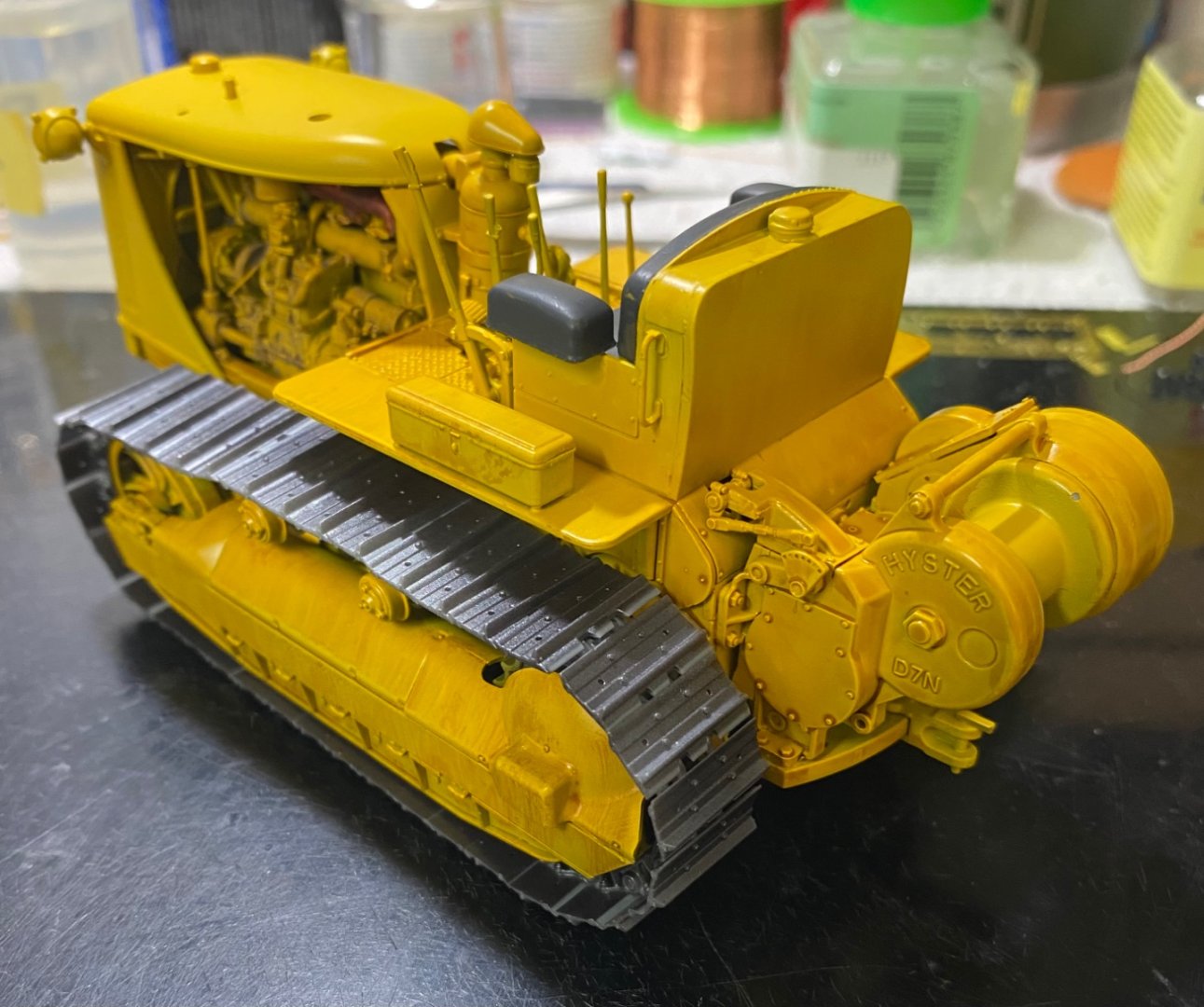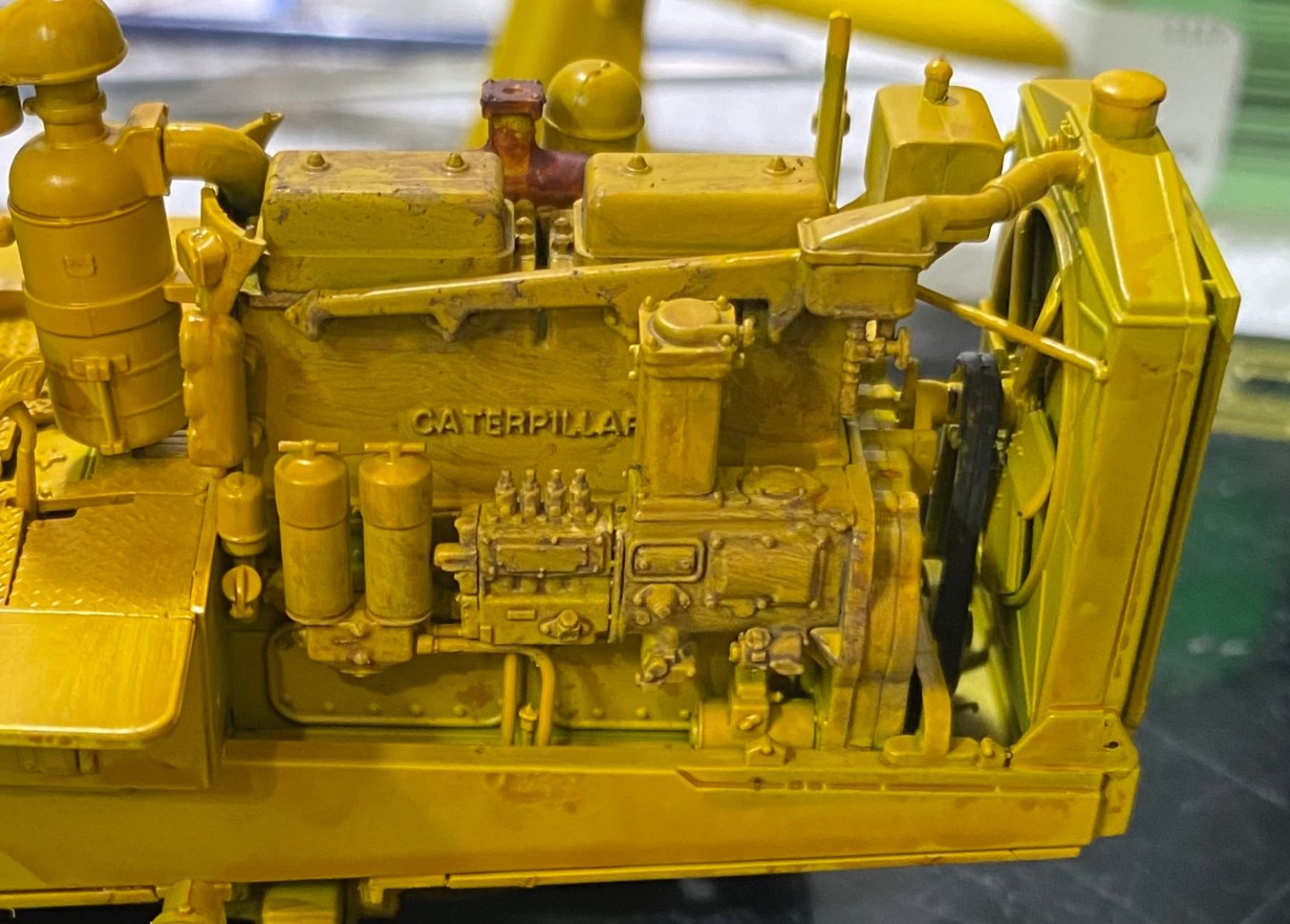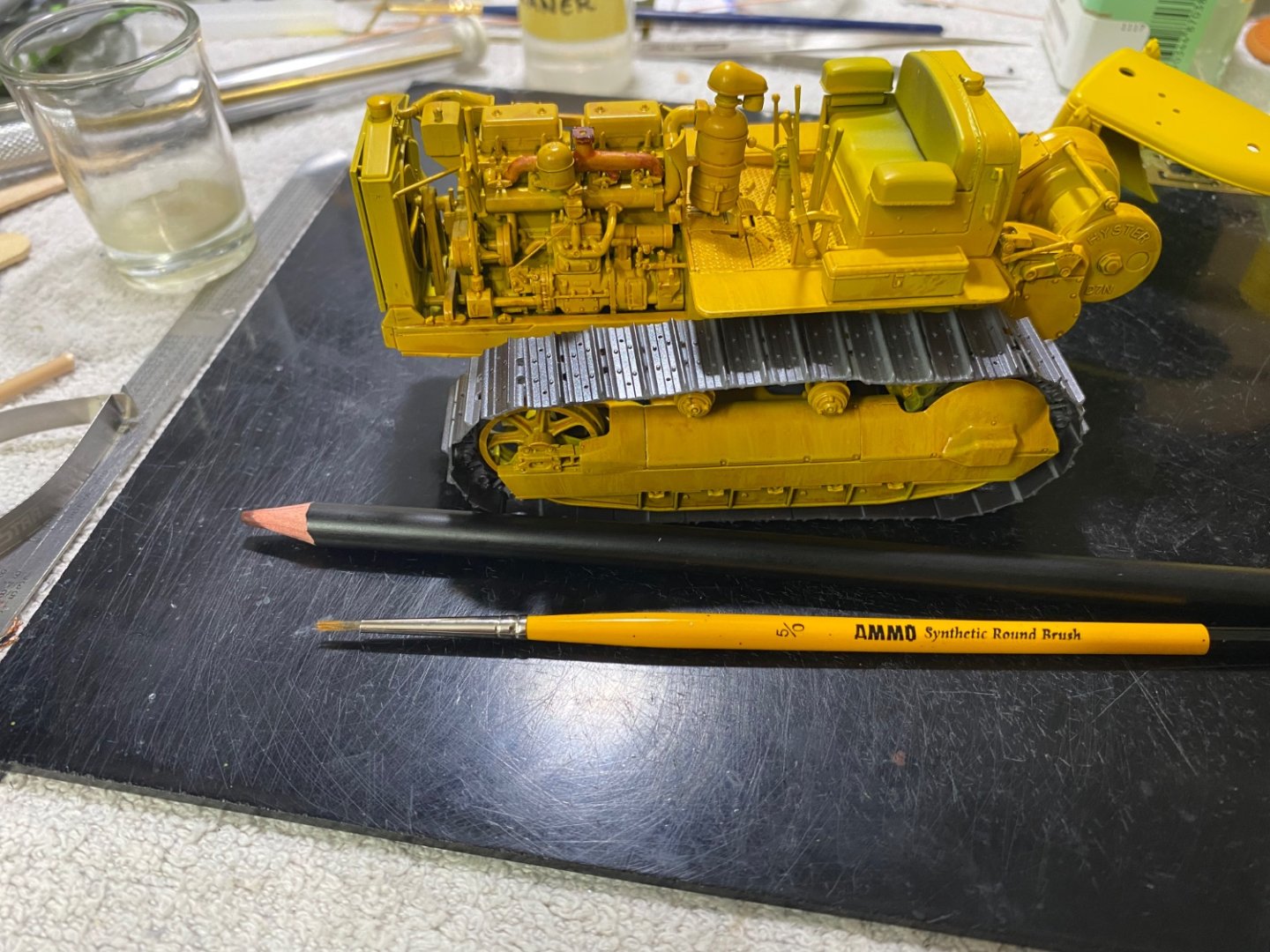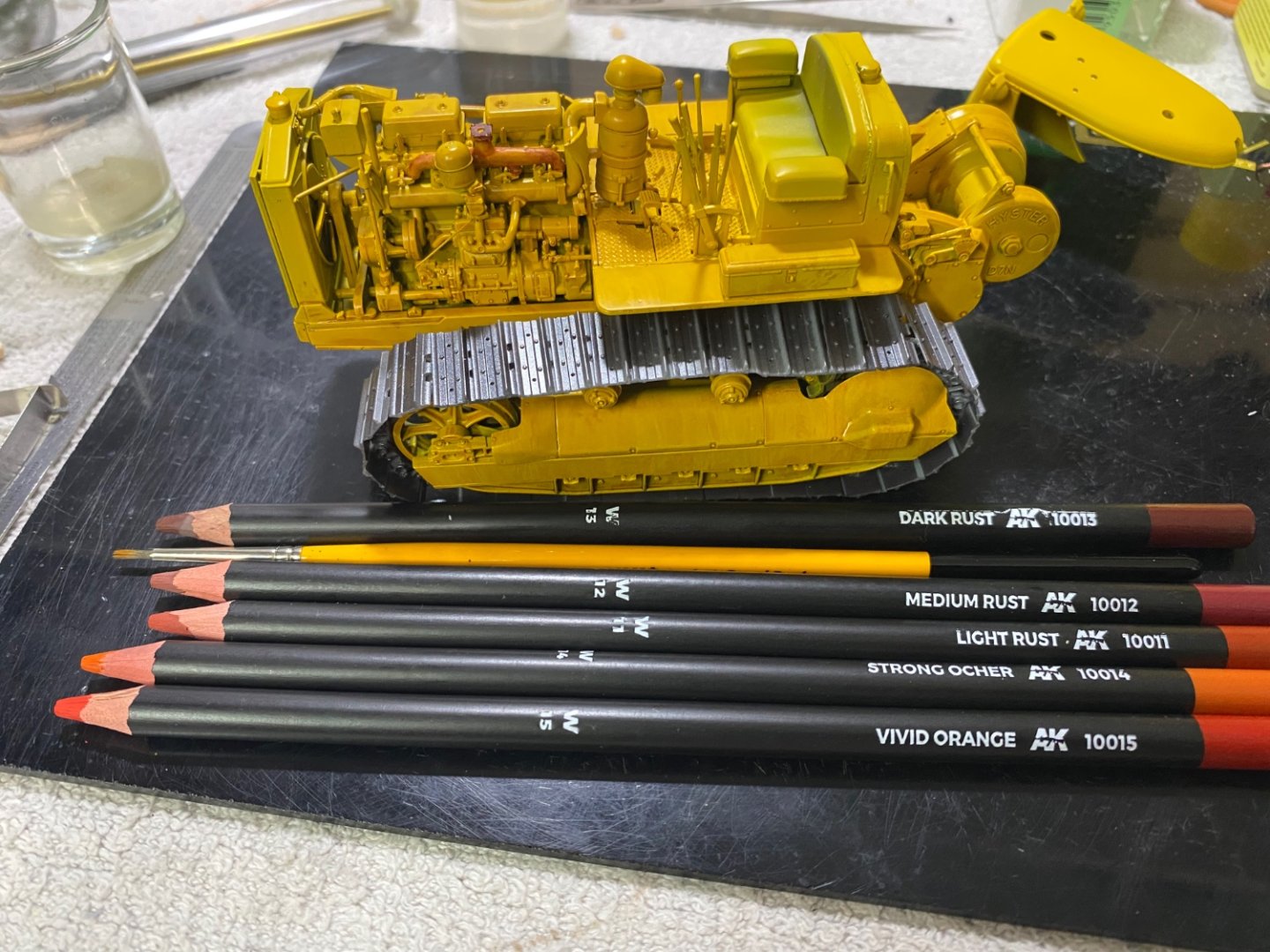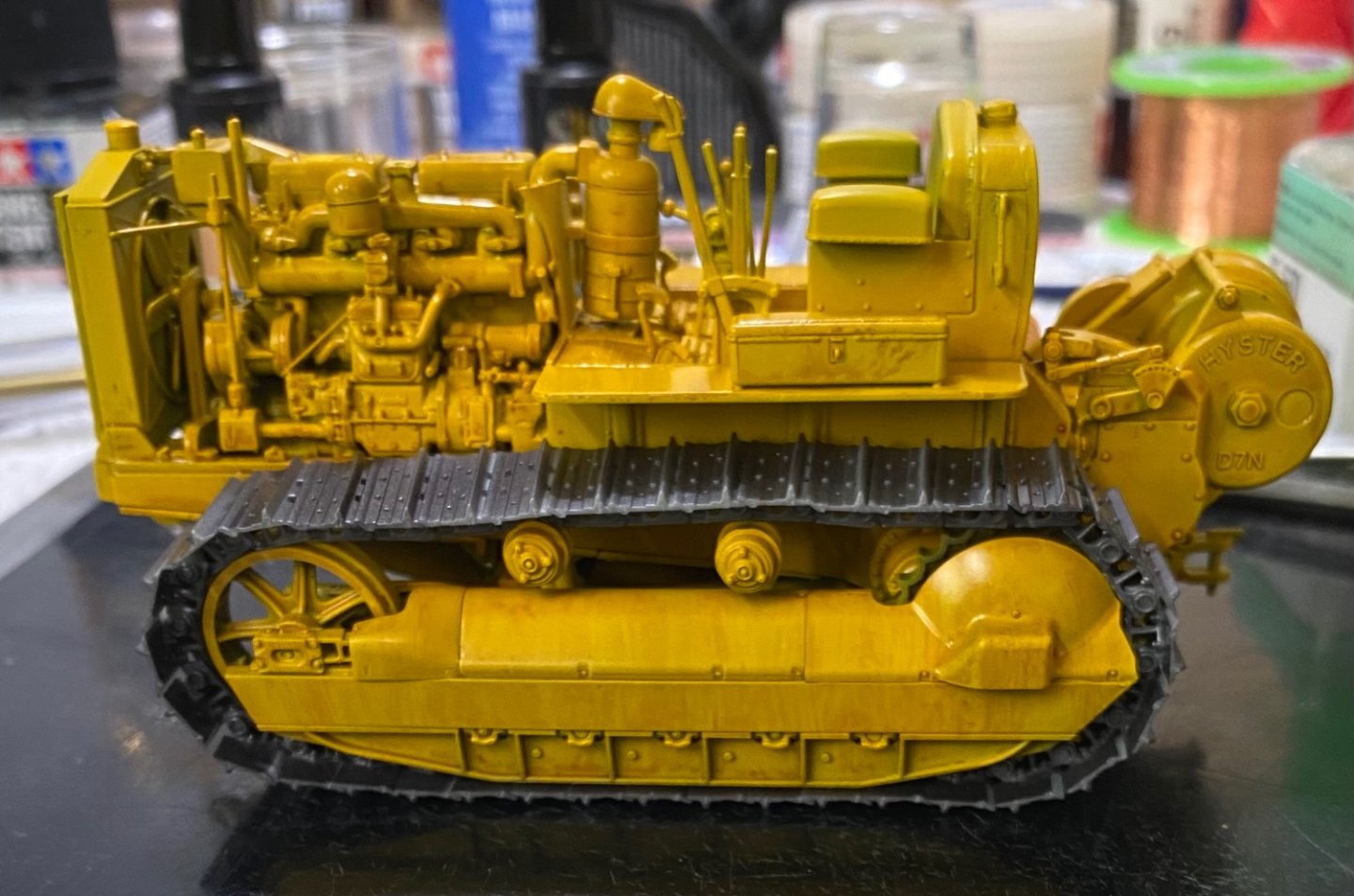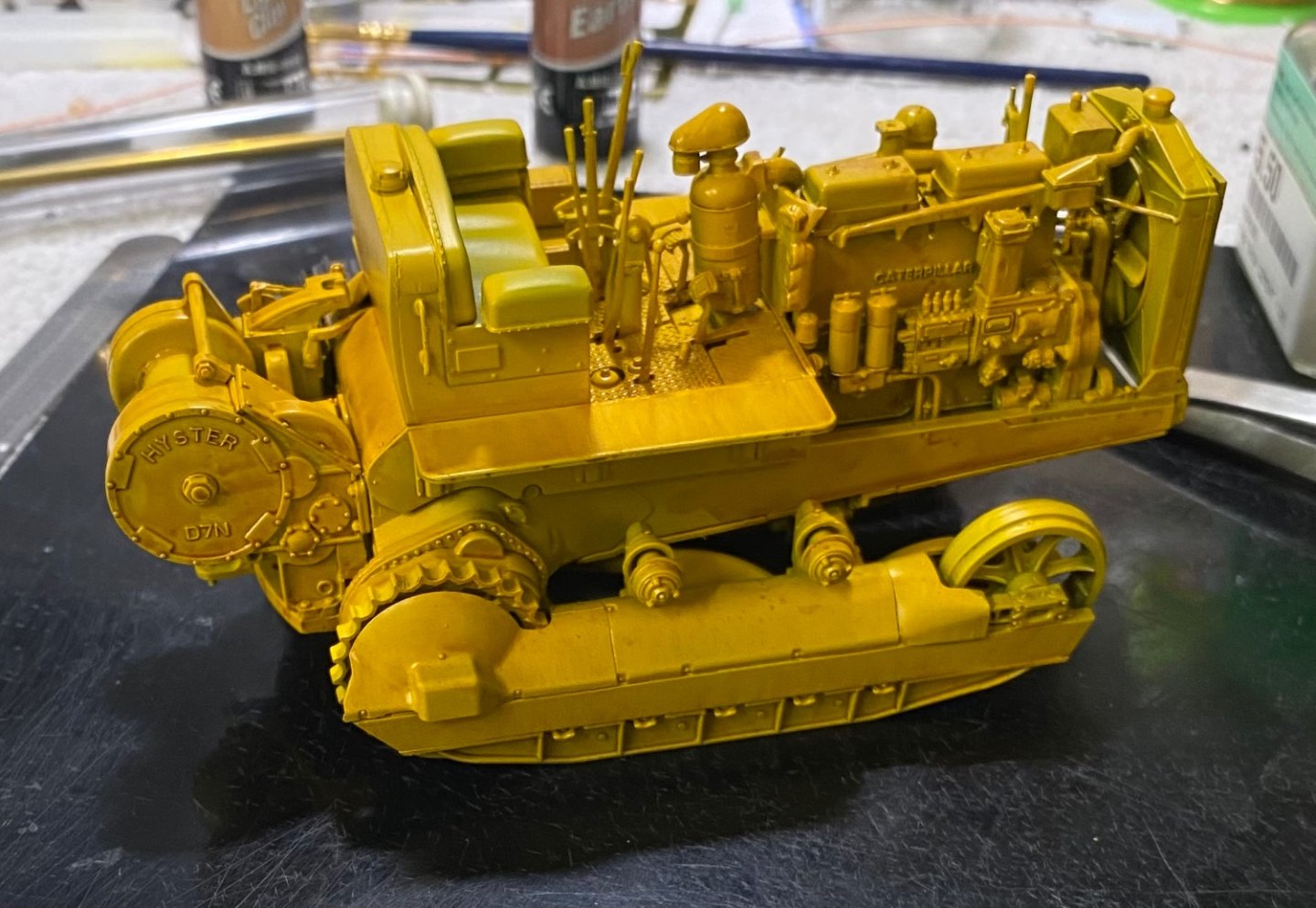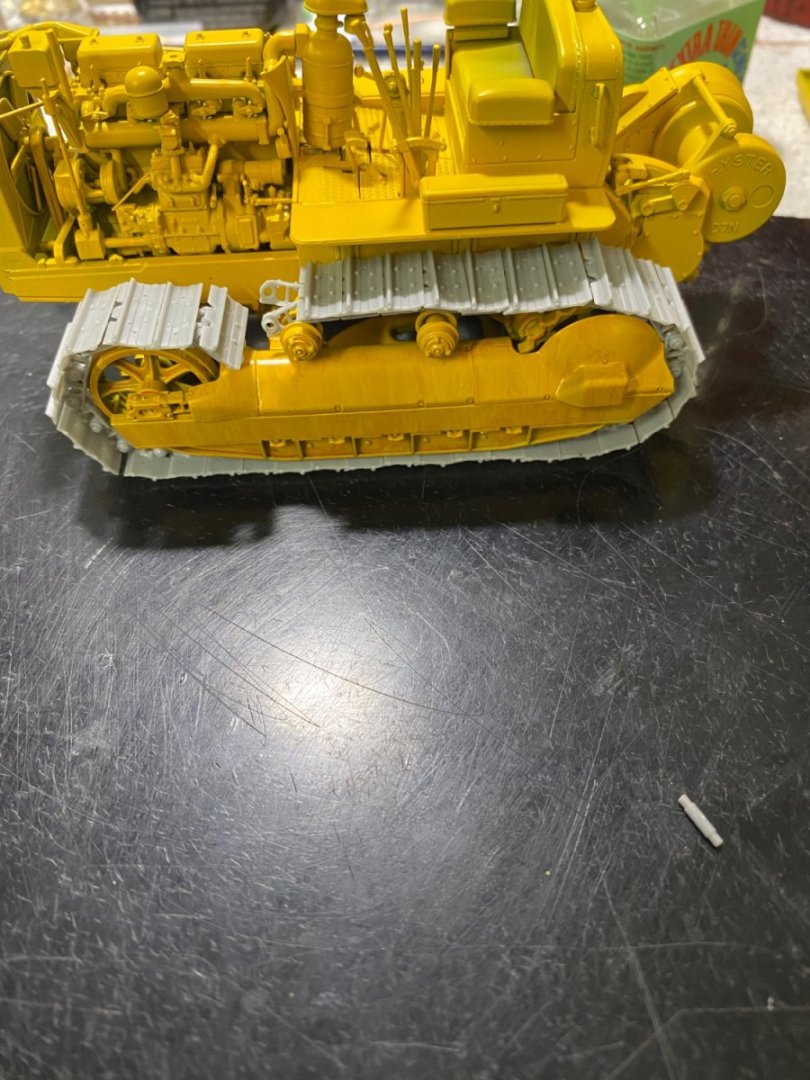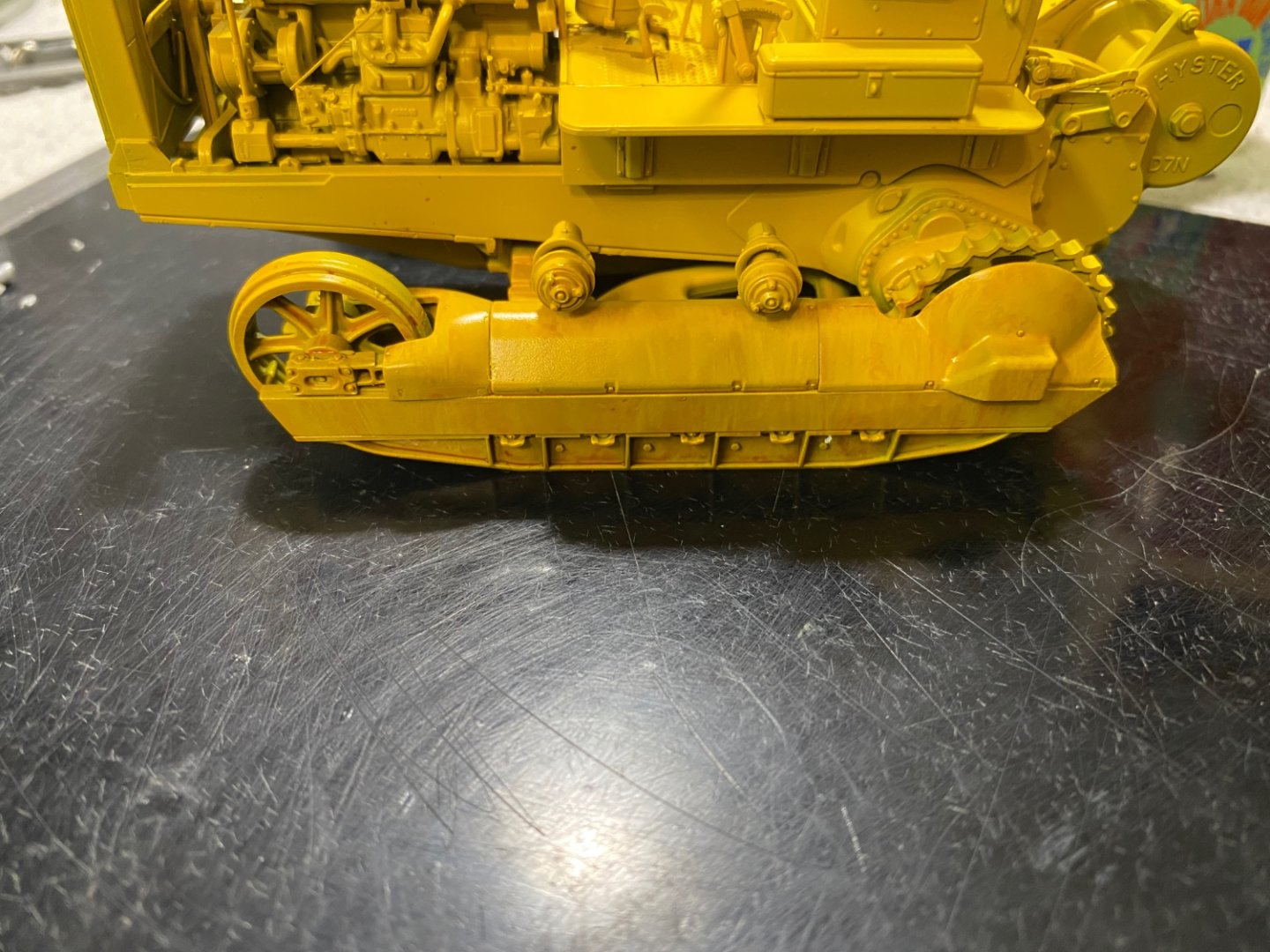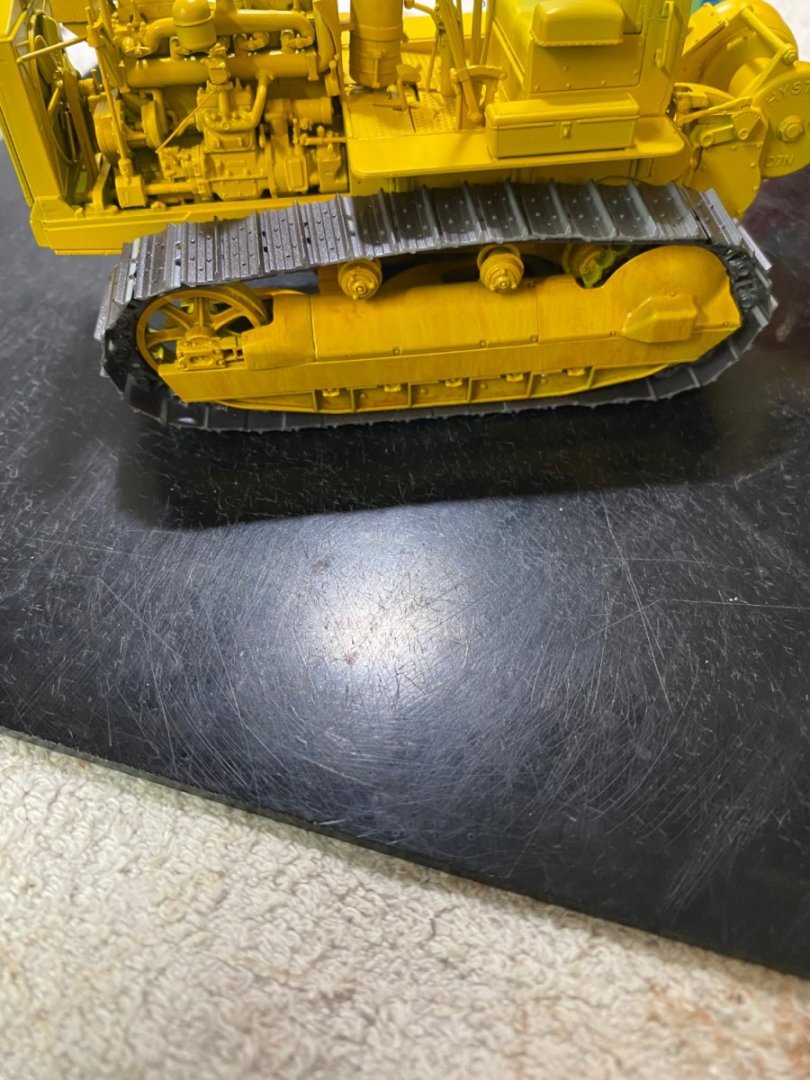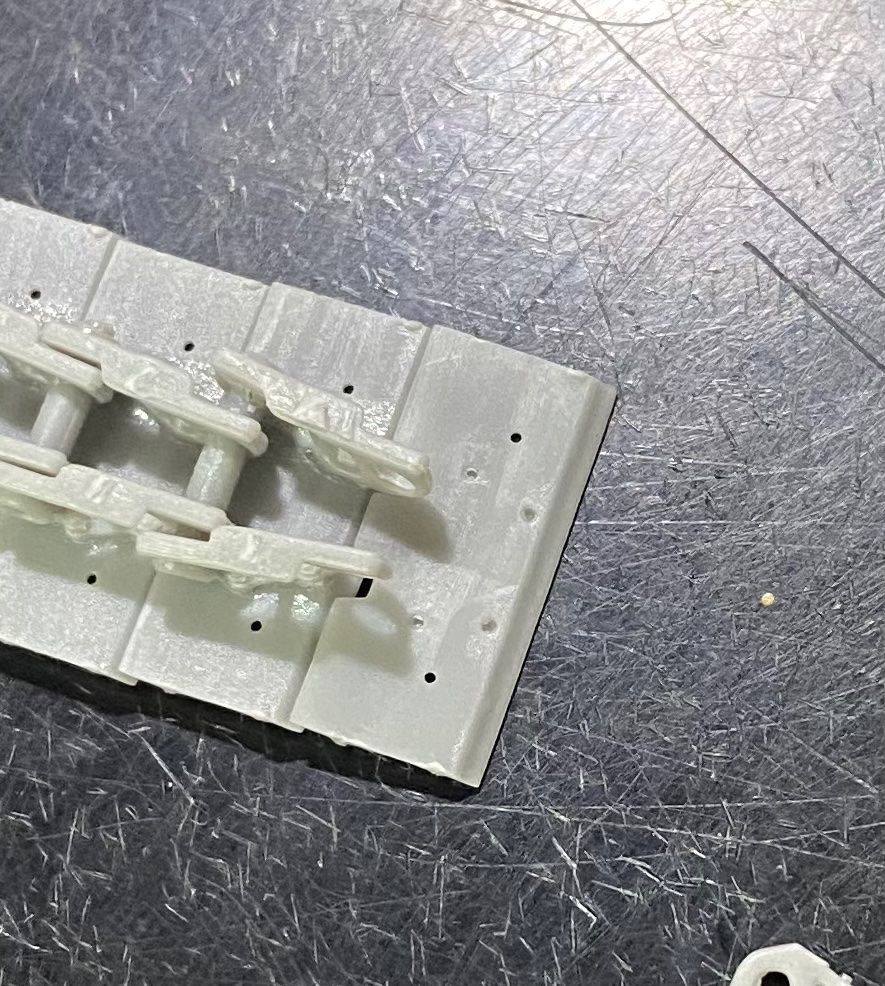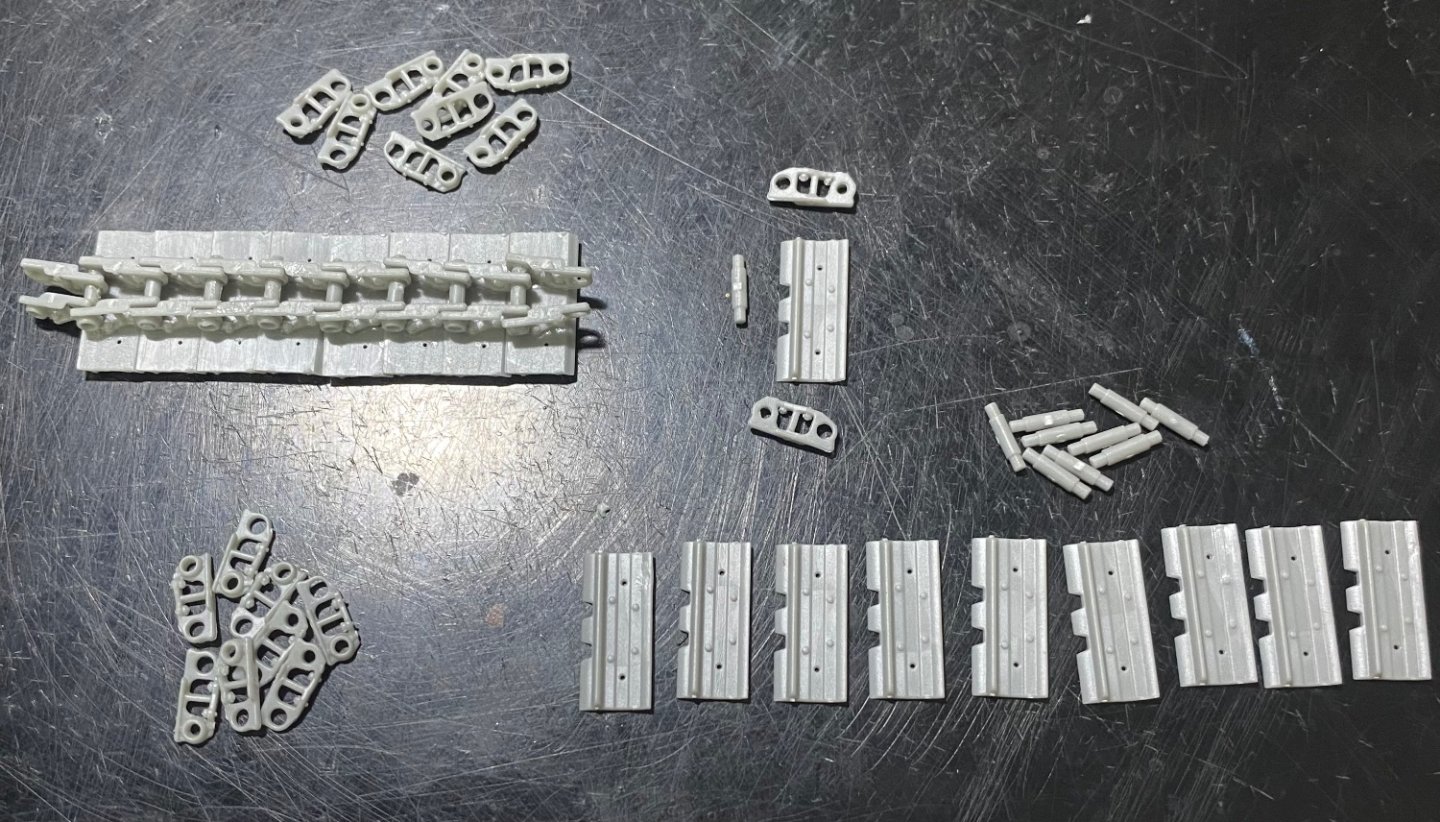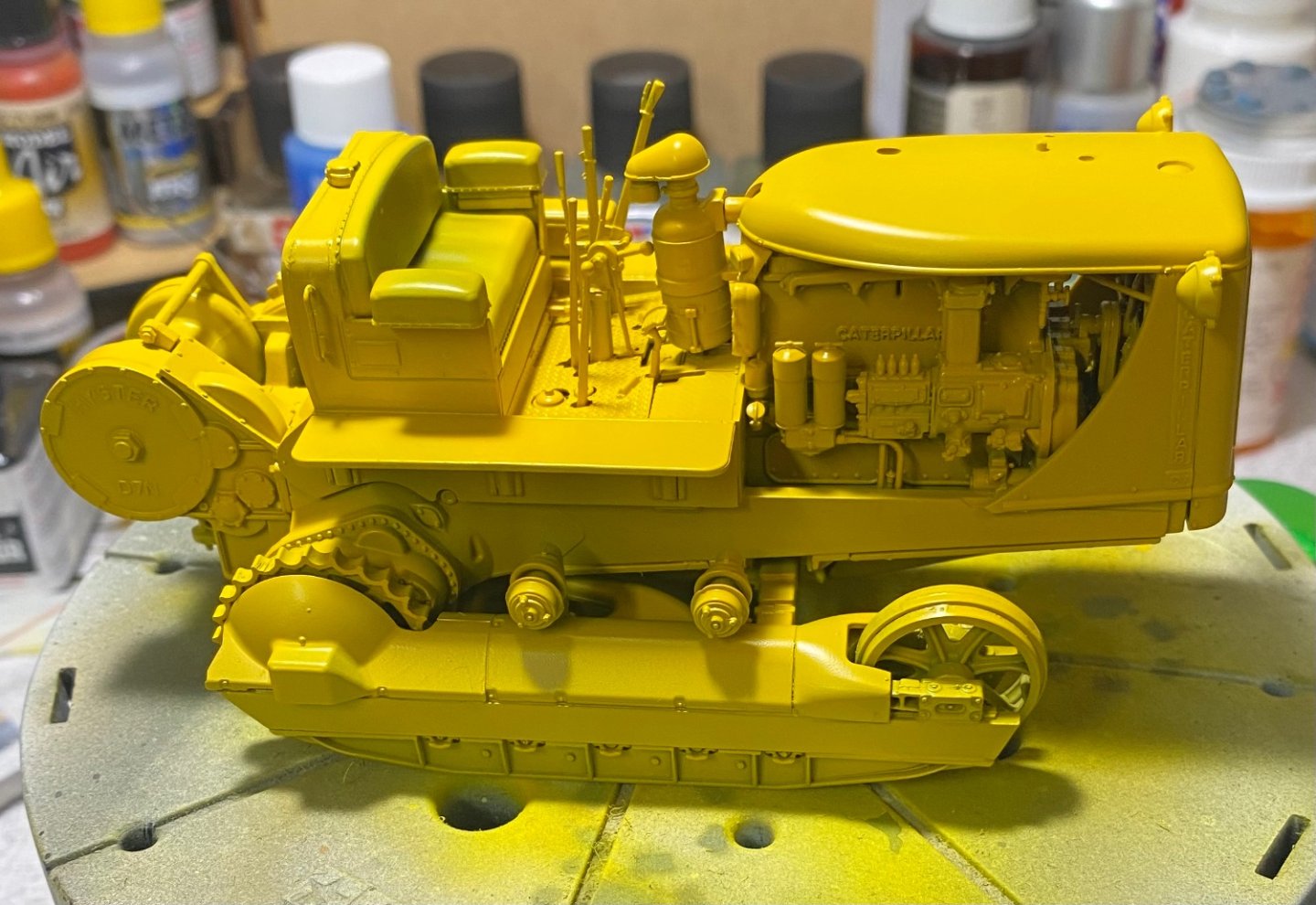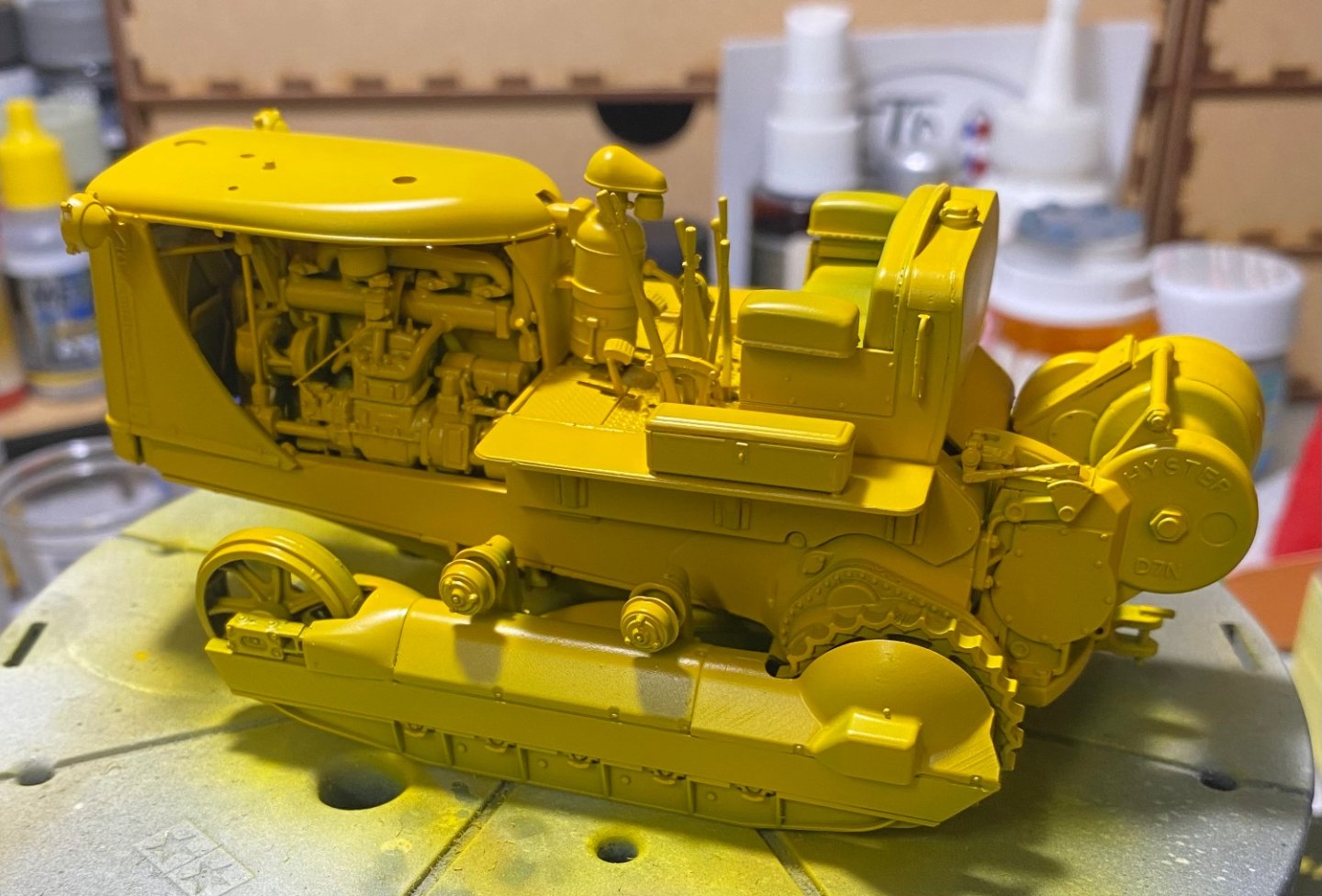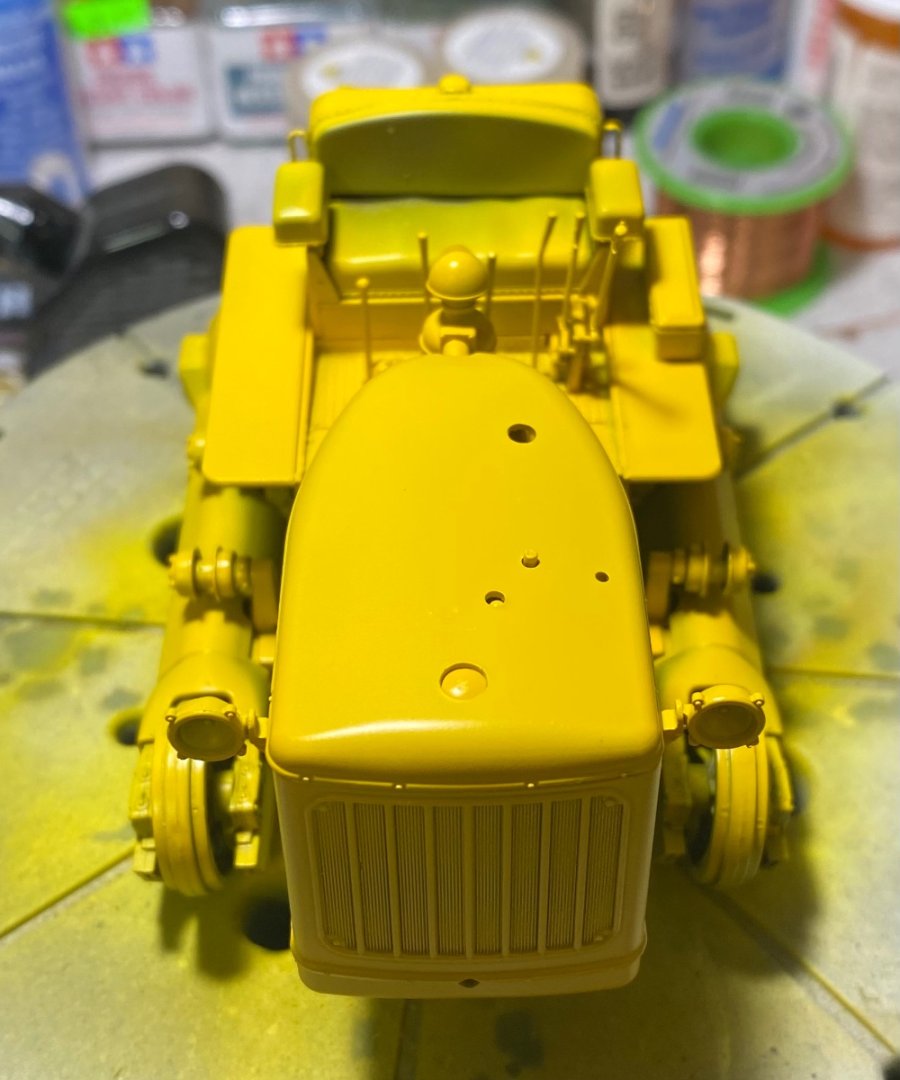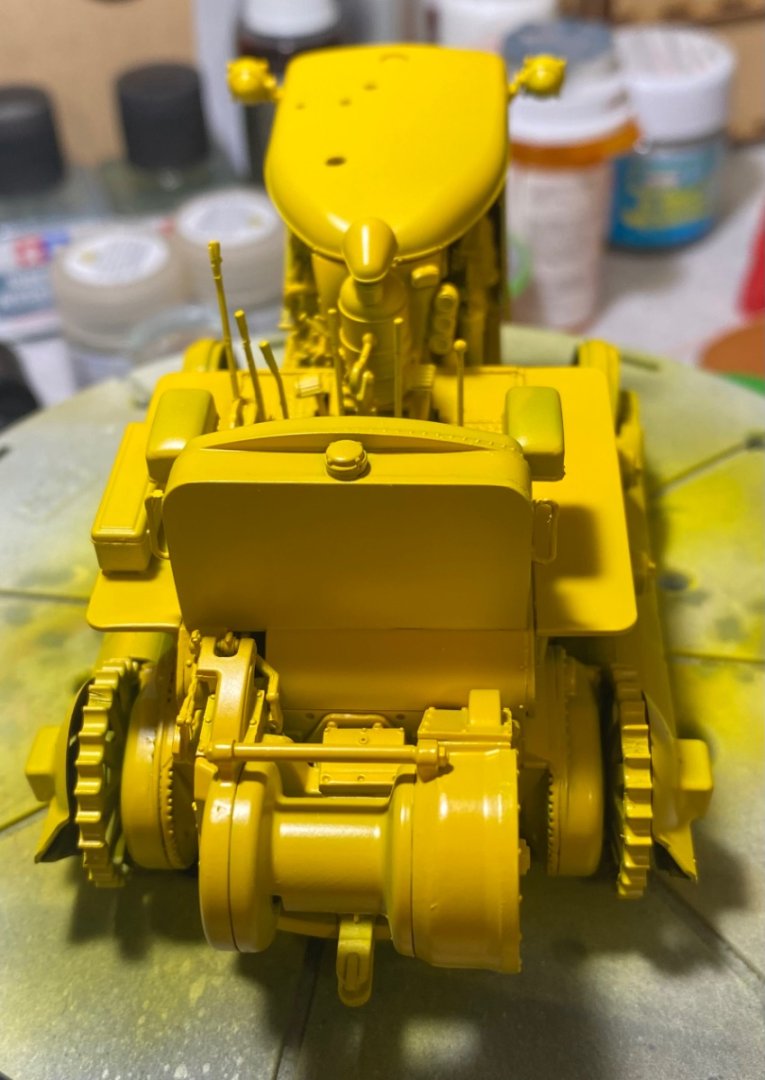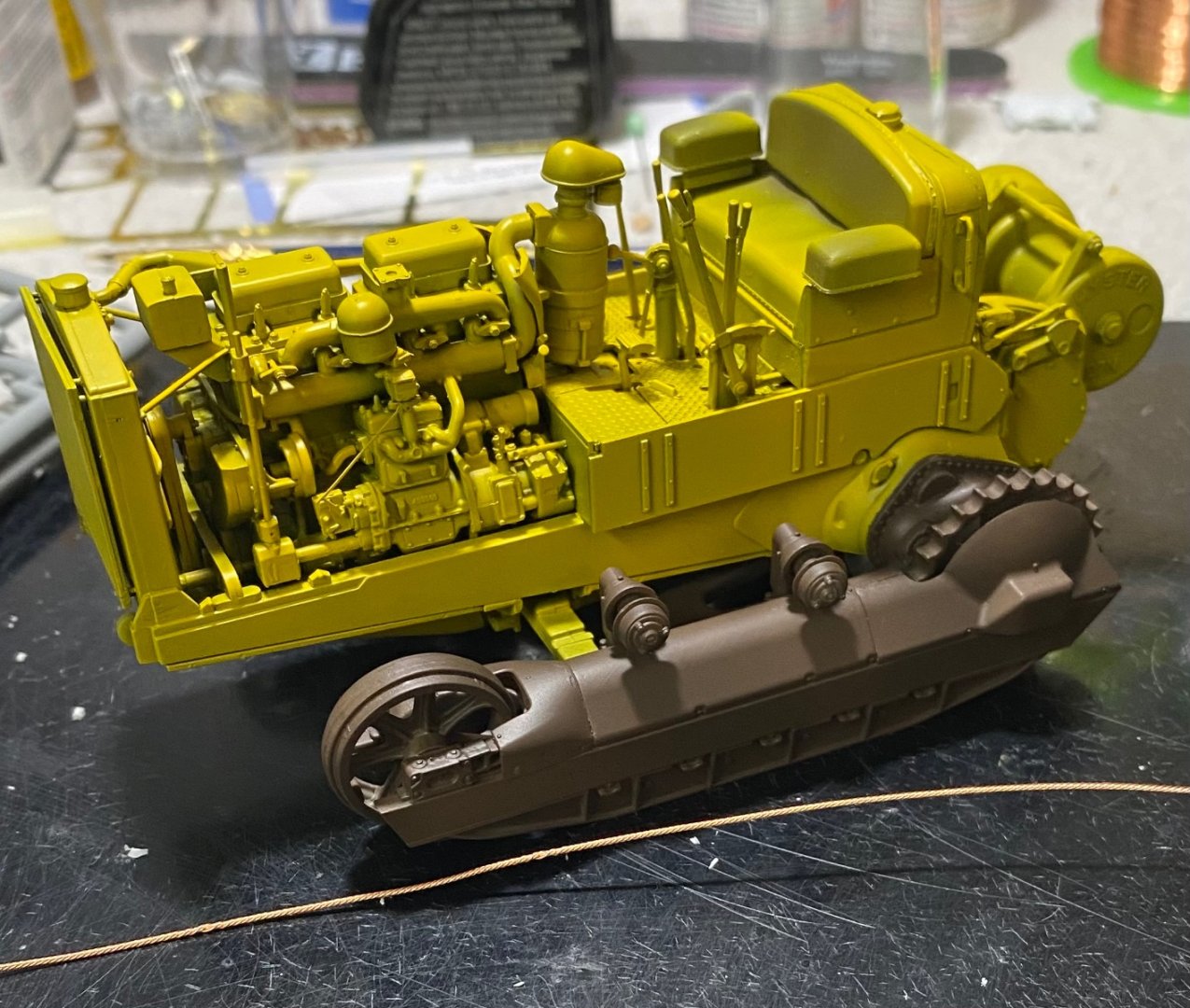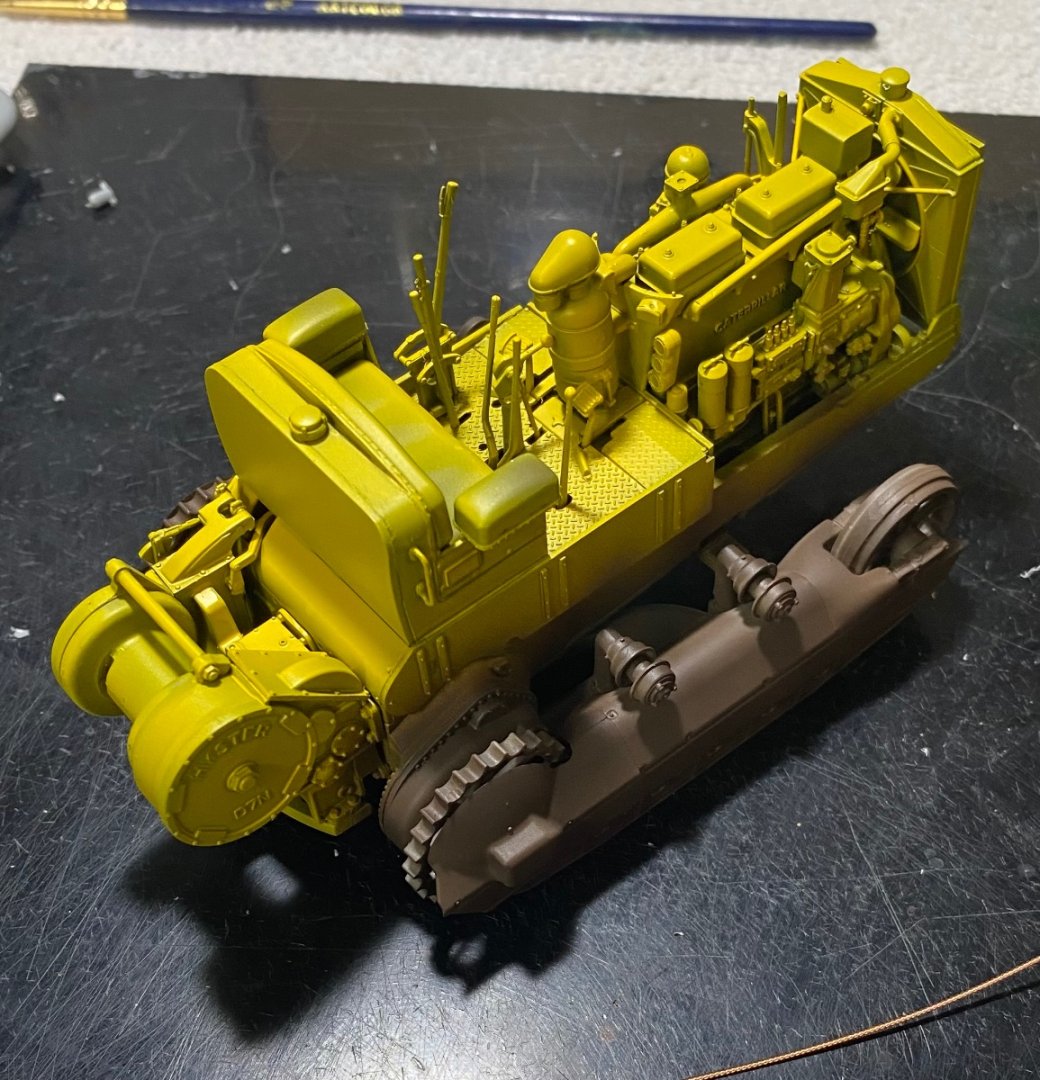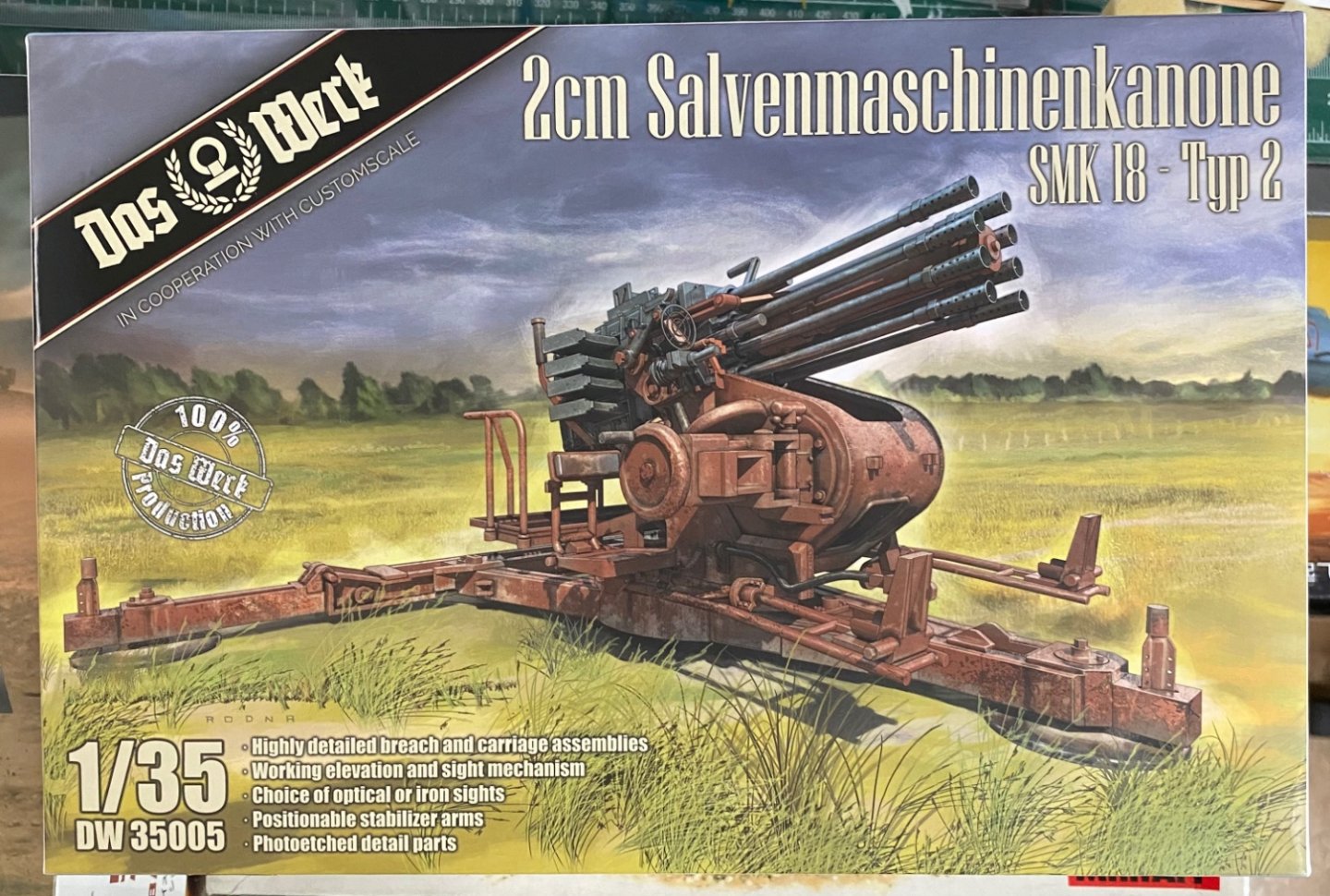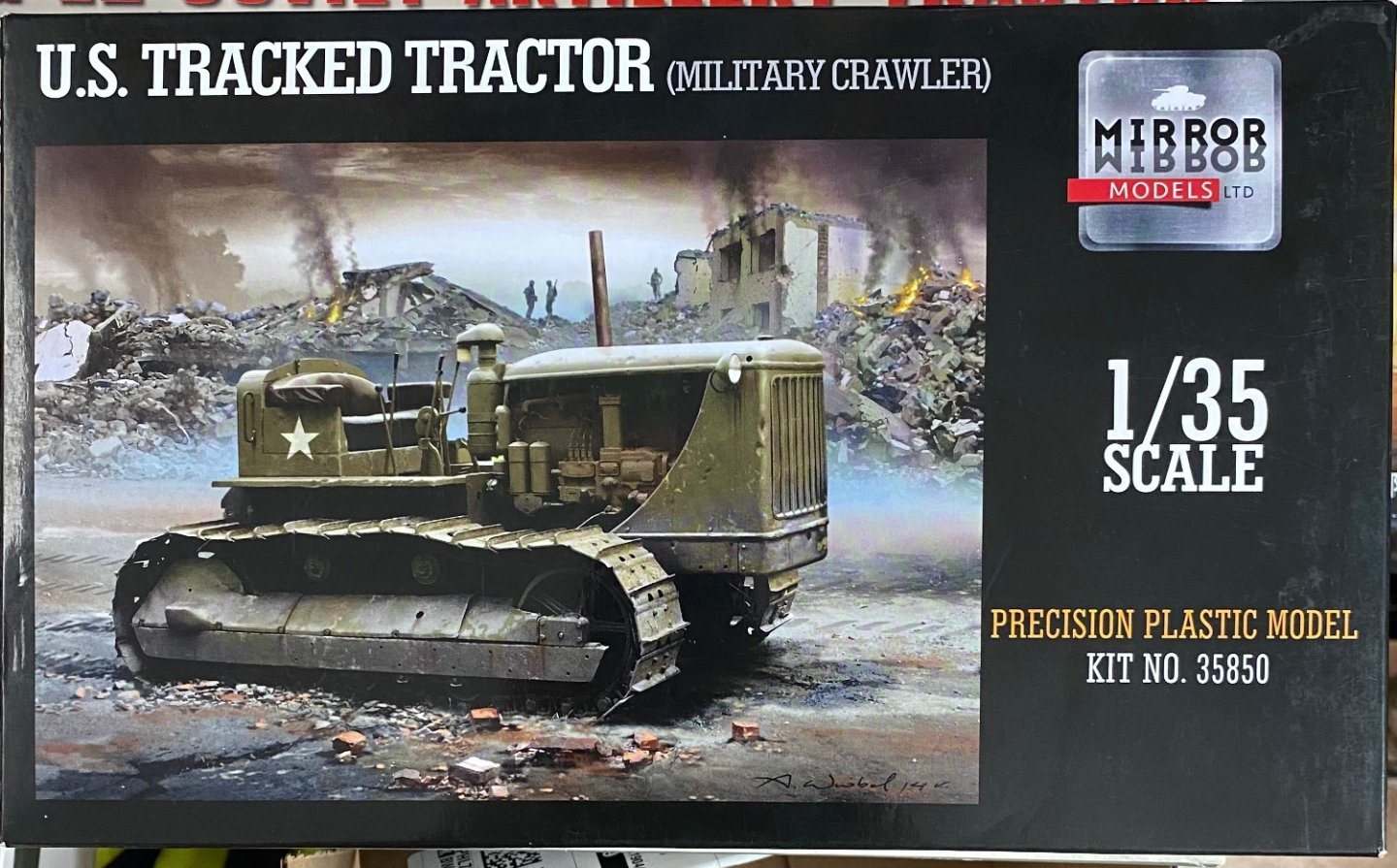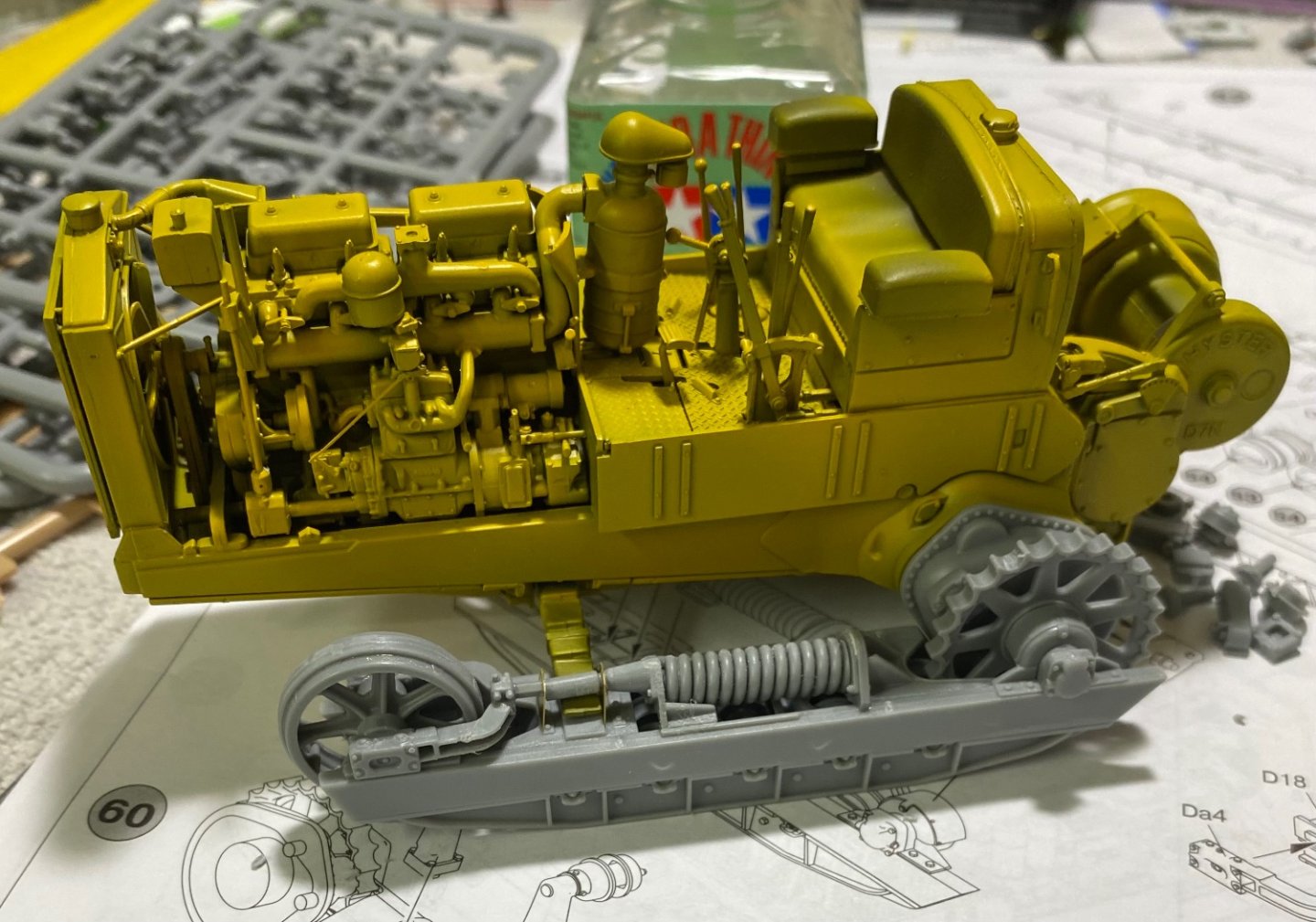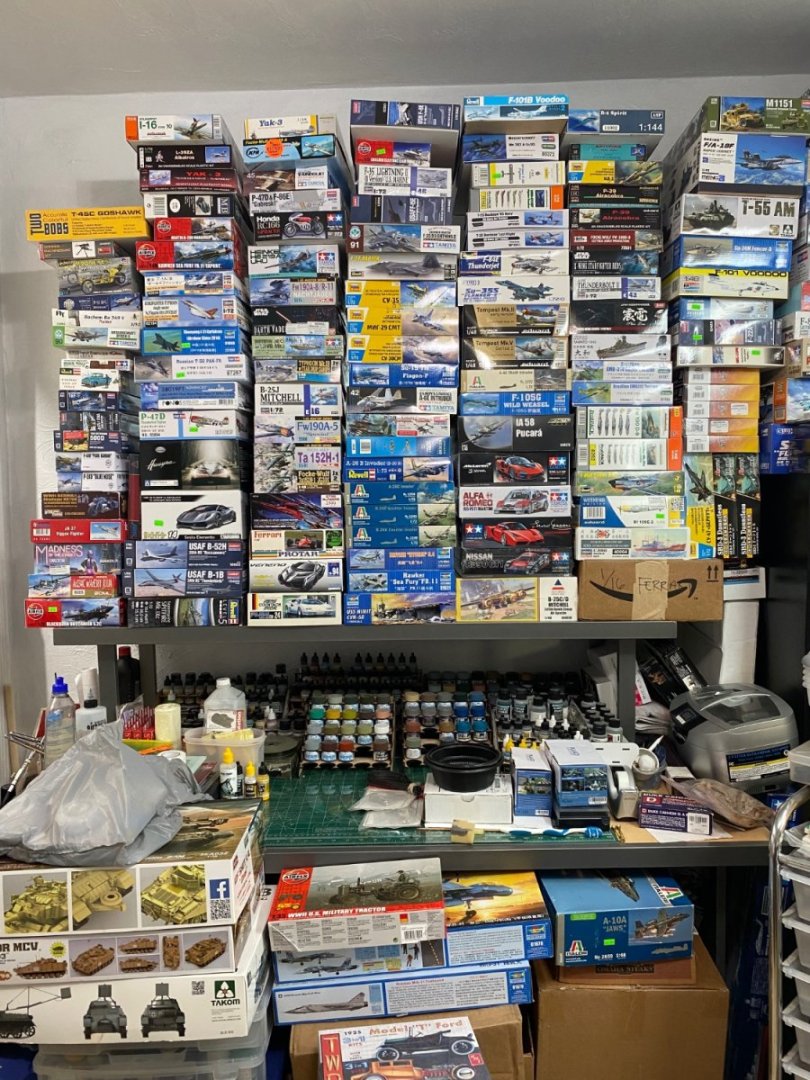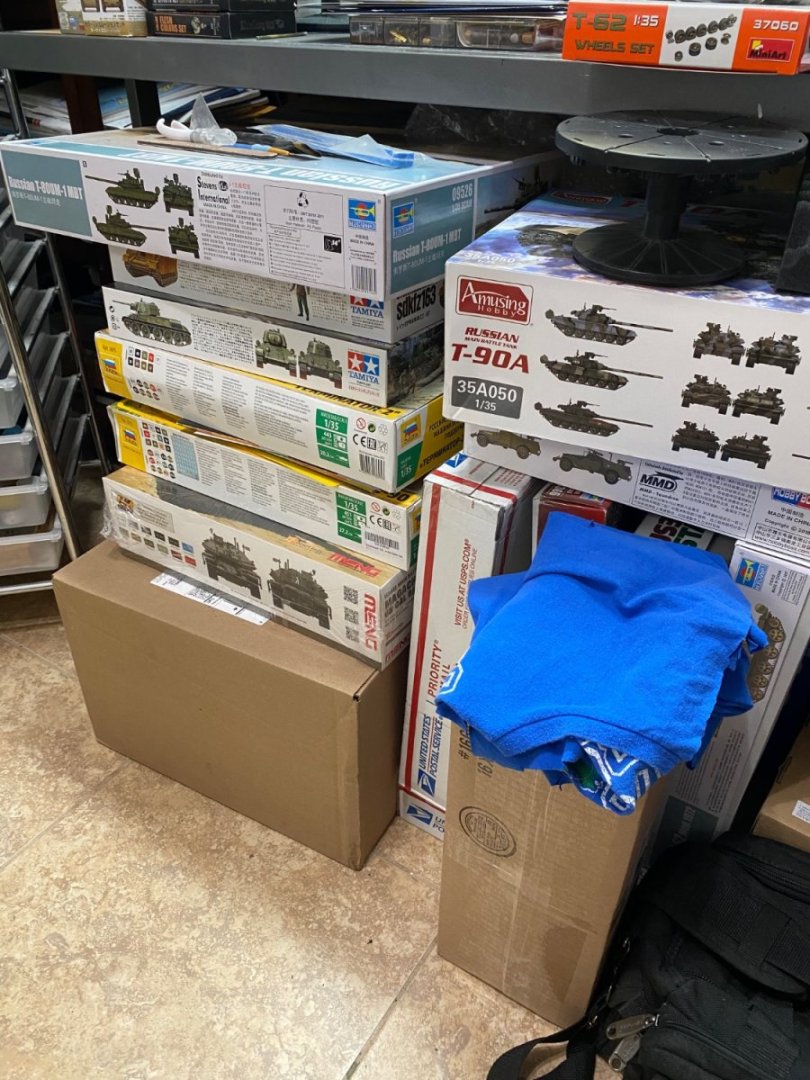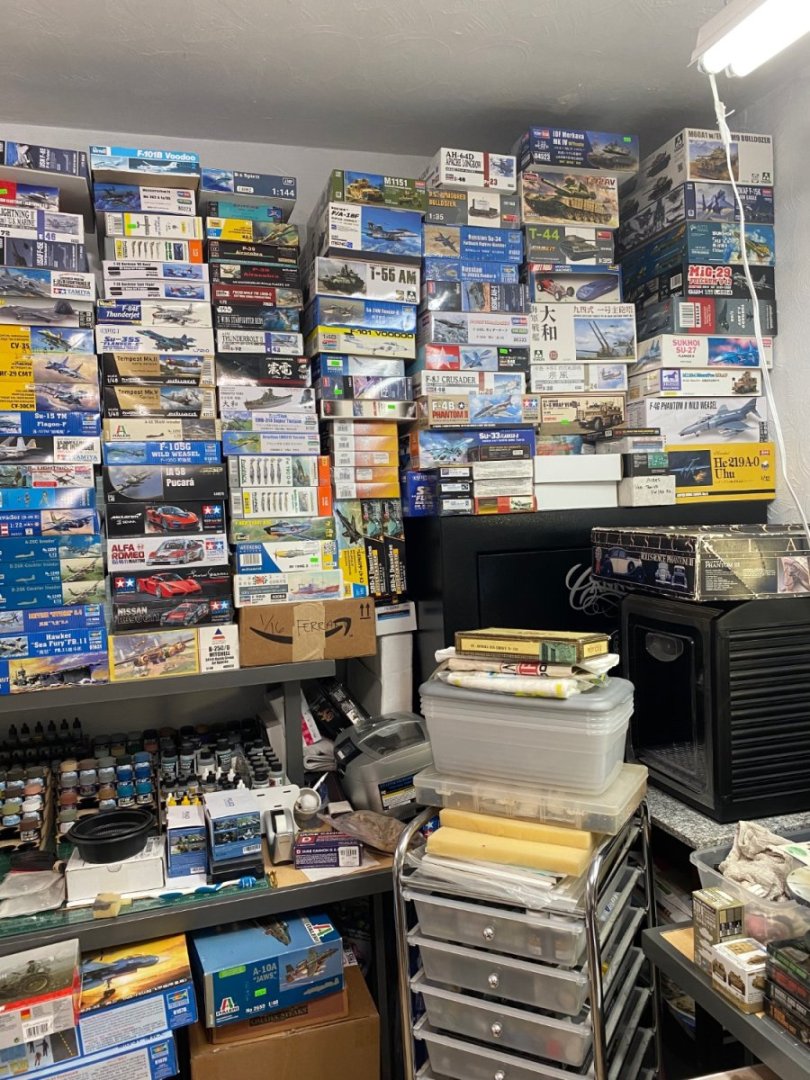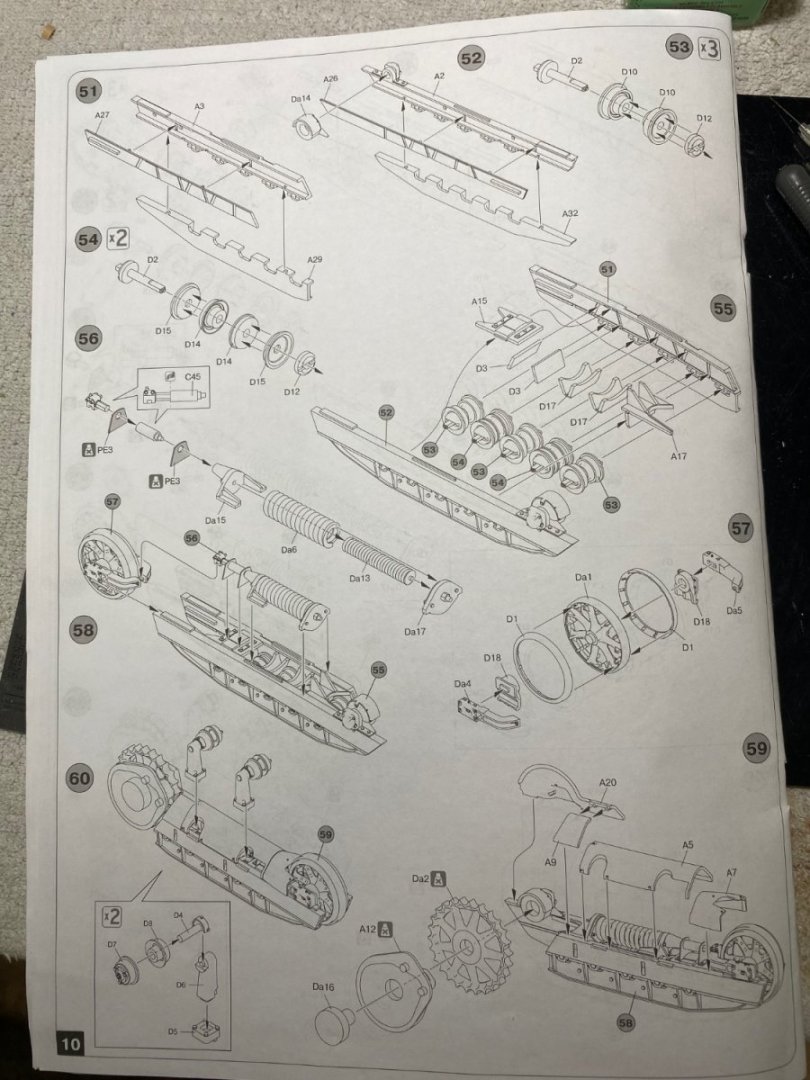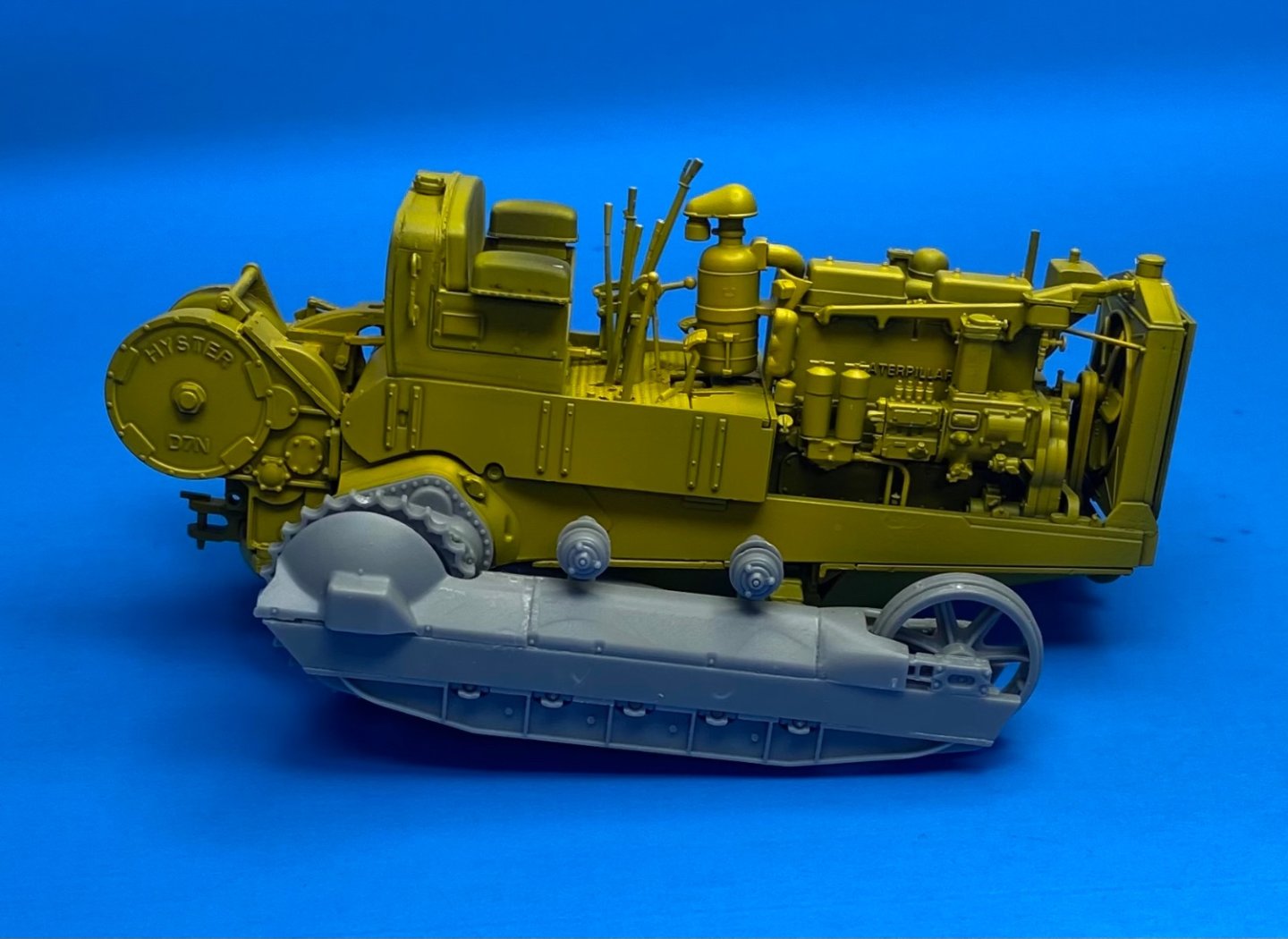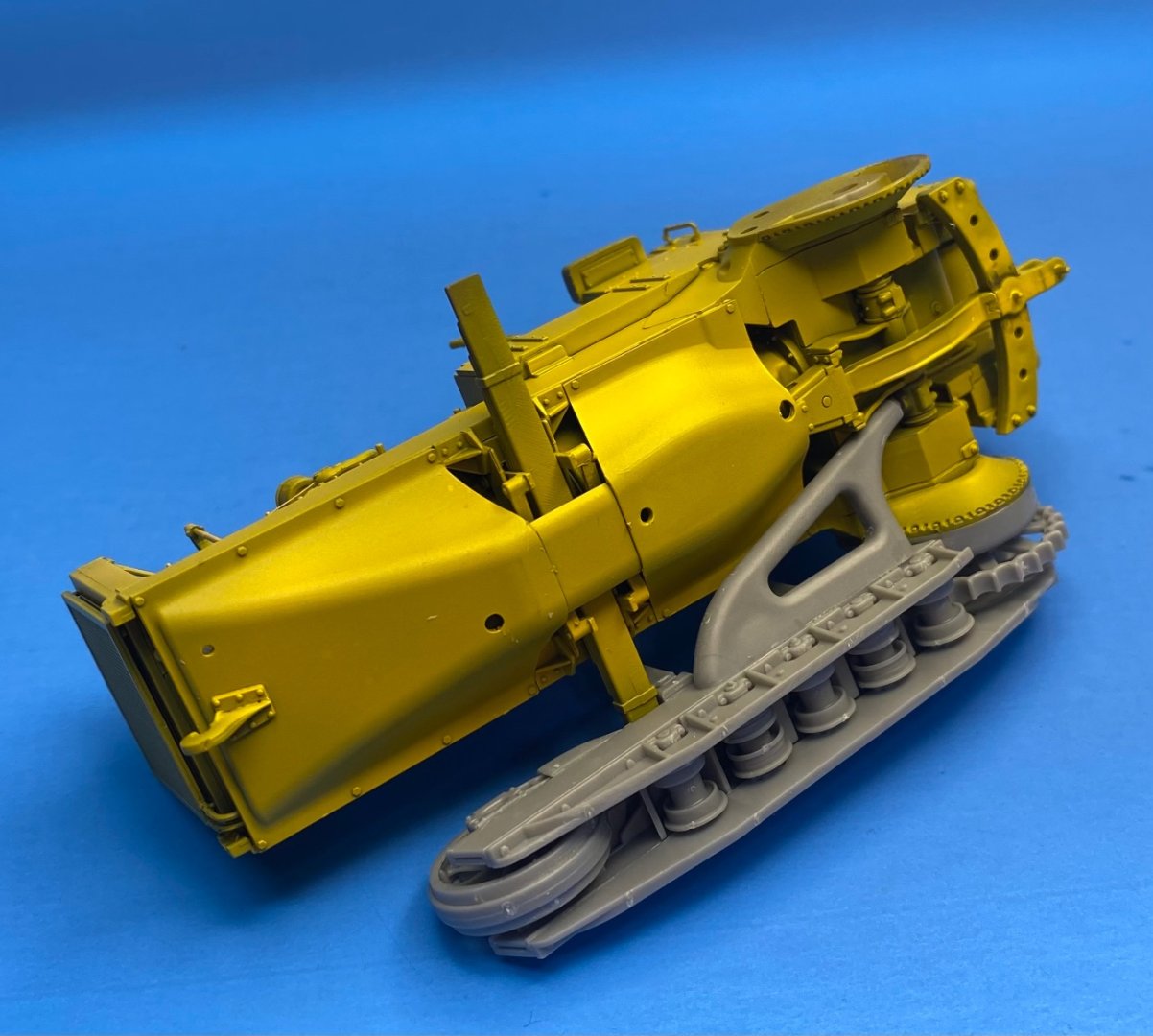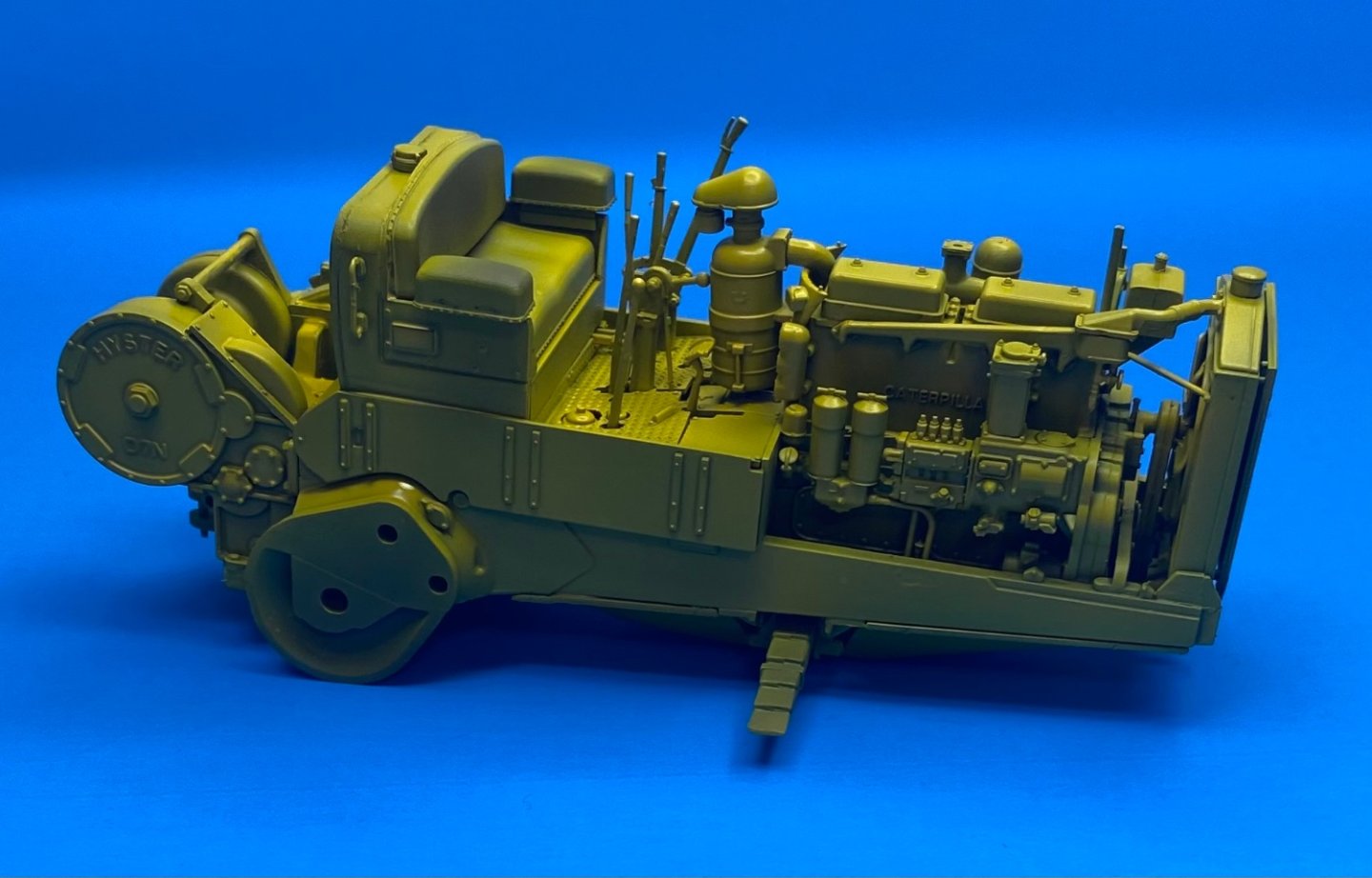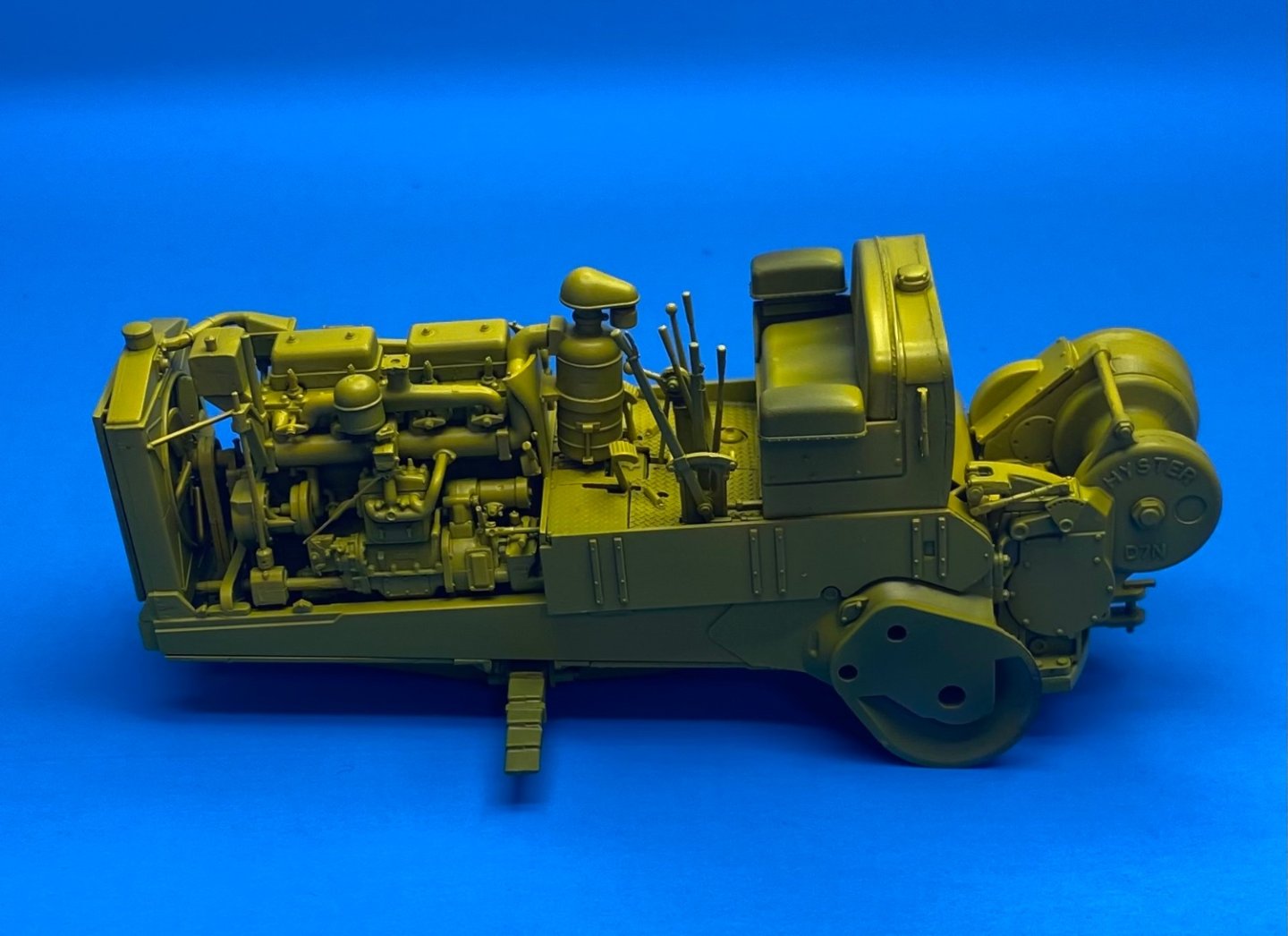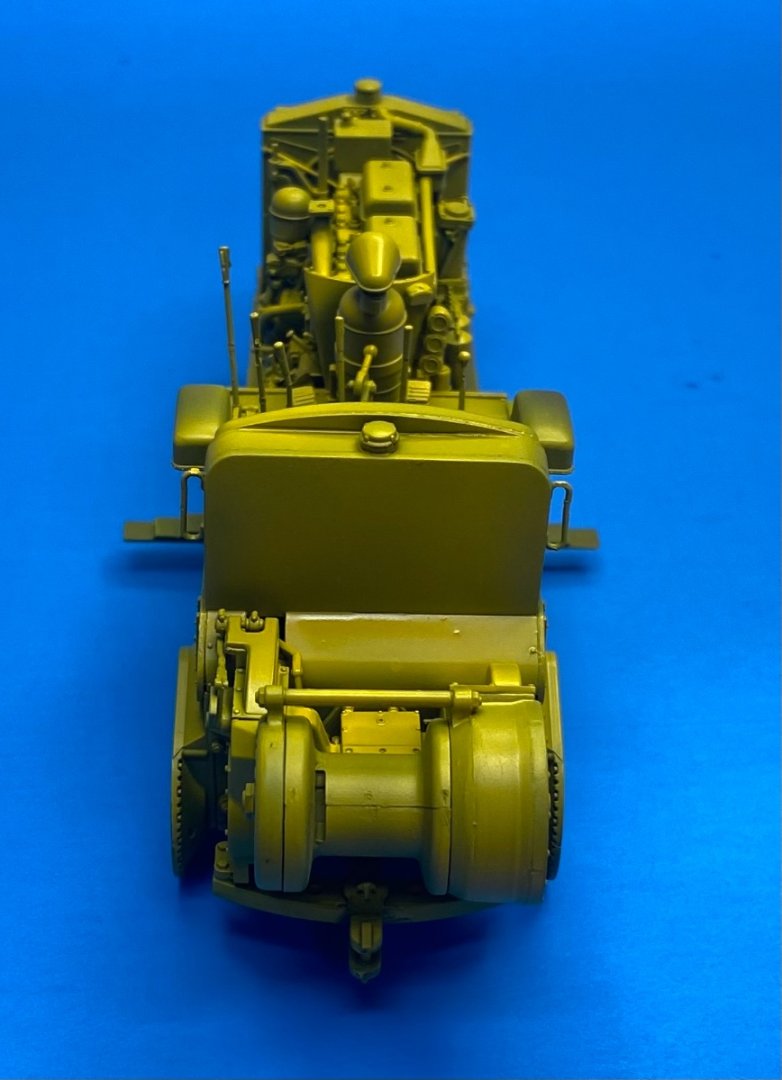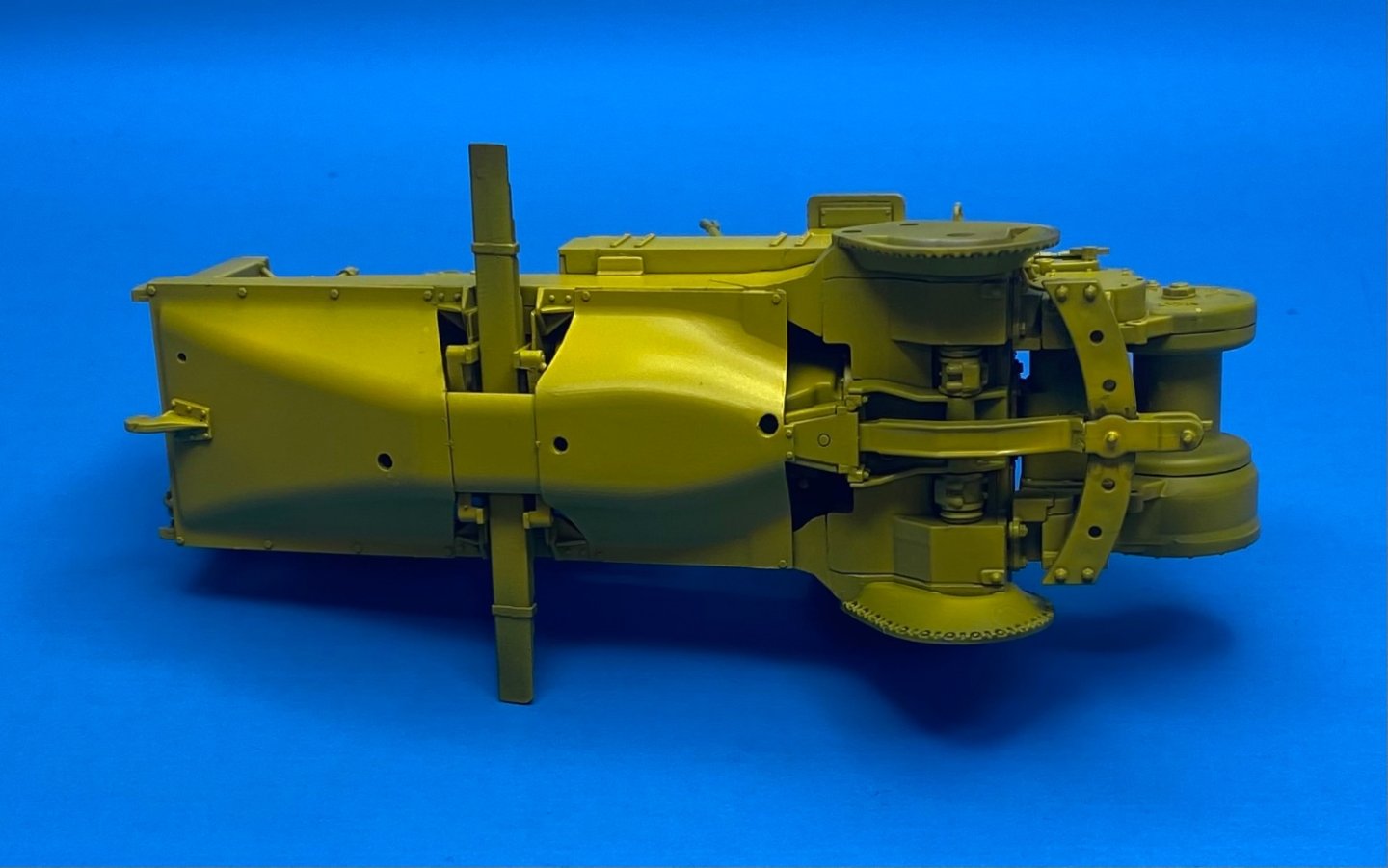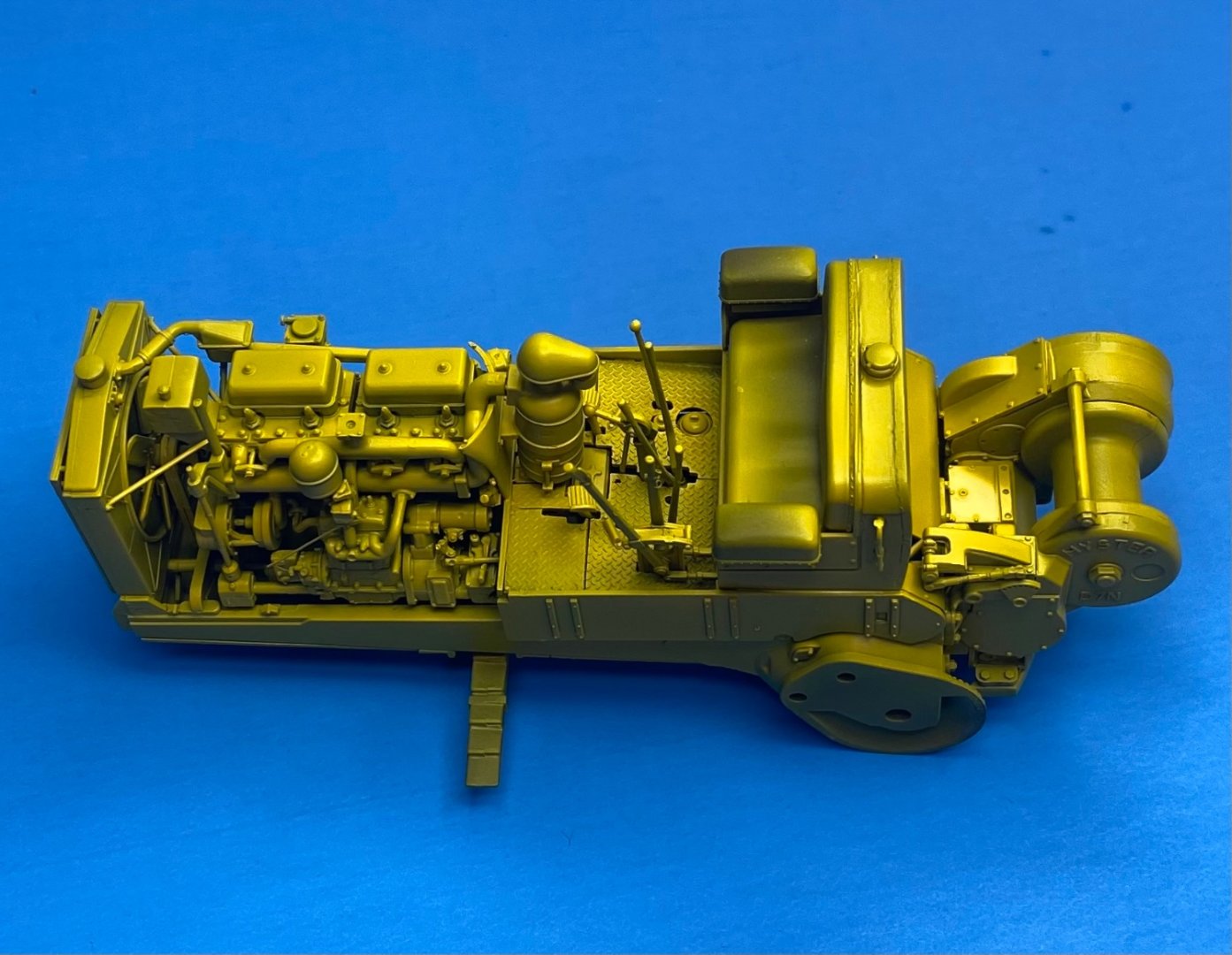-
Posts
7,736 -
Joined
-
Last visited
Content Type
Profiles
Forums
Gallery
Events
Everything posted by CDW
-

U.S. Tractor D7 “Tow Cat” by CDW - FINISHED - MiniArt - 1:35 Scale
CDW replied to CDW's topic in Non-ship/categorised builds
-

U.S. Tractor D7 “Tow Cat” by CDW - FINISHED - MiniArt - 1:35 Scale
CDW replied to CDW's topic in Non-ship/categorised builds
-

U.S. Tractor D7 “Tow Cat” by CDW - FINISHED - MiniArt - 1:35 Scale
CDW replied to CDW's topic in Non-ship/categorised builds
Using AK Weathering pencils to do some rust items here and there. Started off with the exhaust manifold in dark rust. Subsequent colors will be applied to achieve the effect desired. -

U.S. Tractor D7 “Tow Cat” by CDW - FINISHED - MiniArt - 1:35 Scale
CDW replied to CDW's topic in Non-ship/categorised builds
Acrylics, water based, but there must be something added that slows the drying time. It's to allow some self-leveling tendencies, I think. Kinda neat how the shader left what looks like a handprint on the toolbox. Totally unanticipated. -

U.S. Tractor D7 “Tow Cat” by CDW - FINISHED - MiniArt - 1:35 Scale
CDW replied to CDW's topic in Non-ship/categorised builds
24 hour drying time on the shaders -

U.S. Tractor D7 “Tow Cat” by CDW - FINISHED - MiniArt - 1:35 Scale
CDW replied to CDW's topic in Non-ship/categorised builds
-

U.S. Tractor D7 “Tow Cat” by CDW - FINISHED - MiniArt - 1:35 Scale
CDW replied to CDW's topic in Non-ship/categorised builds
Yes on the yellow for this one. I have another armored version I will do in OD. -

U.S. Tractor D7 “Tow Cat” by CDW - FINISHED - MiniArt - 1:35 Scale
CDW replied to CDW's topic in Non-ship/categorised builds
The very last link is completed by sliding a pin in place to secure the link, then glue on the track plate/pad. A subtle coat of clay colored shader placed on area of road wheels to simulate ground conditions. Other shades will be used elsewhere on the model along with other weathering effects. -

U.S. Tractor D7 “Tow Cat” by CDW - FINISHED - MiniArt - 1:35 Scale
CDW replied to CDW's topic in Non-ship/categorised builds
Thanks…and it’s very realistic to the actual way the track links are assembled IRL. MiniArt are on their game in the design of their kits. Maybe could be considered a bit over engineered at times. -

U.S. Tractor D7 “Tow Cat” by CDW - FINISHED - MiniArt - 1:35 Scale
CDW replied to CDW's topic in Non-ship/categorised builds
While there is no quick way to build the tracks, I found an organized and process flow that works well for me. First glue a pin into one side of the link parts. Note that each track pad has four alignment indents to locate the link parts. Slide the pin/link assembly through the preceding link and glue to pad. Note that there is a right and left link part and these parts are specific for each side. Now slide the opposite link part onto the pin then glue to the track pad. Glue must not contact the pin/link part so as to remain moveable. -

U.S. Tractor D7 “Tow Cat” by CDW - FINISHED - MiniArt - 1:35 Scale
CDW replied to CDW's topic in Non-ship/categorised builds
Thanks OC Each track link consists of four parts. Each track side contains thirty six links. No quick way to get this done, parts are fiddly. -

U.S. Tractor D7 “Tow Cat” by CDW - FINISHED - MiniArt - 1:35 Scale
CDW replied to CDW's topic in Non-ship/categorised builds
-

P-51 "American Beauty" by Javlin - FINISHED - Trumpeter - 1/32
CDW replied to Javlin's topic in Non-ship/categorised builds
Beautiful, a stallion! -

U.S. Tractor D7 “Tow Cat” by CDW - FINISHED - MiniArt - 1:35 Scale
CDW replied to CDW's topic in Non-ship/categorised builds
I twisted together 4 strands of 30 gauge wire to create a cable for the winch. It seems a little too much diameter so will re-do with 3 strands for a smaller diameter. If any of you have ever been a “swamper” for a winch equipped dozer, you will have a healthy respect for steel cable. The cable will often get frayed with individual wire strands jutting out. Even with heavy leather gloves on. The sharp strands often poke through the gloves giving a painful stab wound to the hands and fingers. It’s probably hard to believe, but I would completely wear out a new pair of leather work gloves every day. Company doesn't supply them either. It’s an individual expense. -

U.S. Tractor D7 “Tow Cat” by CDW - FINISHED - MiniArt - 1:35 Scale
CDW replied to CDW's topic in Non-ship/categorised builds
-

U.S. Tractor D7 “Tow Cat” by CDW - FINISHED - MiniArt - 1:35 Scale
CDW replied to CDW's topic in Non-ship/categorised builds
She even went with me to buy the models today. She never gives me any grief for buying hobby items, Never has in almost 50 years. -

U.S. Tractor D7 “Tow Cat” by CDW - FINISHED - MiniArt - 1:35 Scale
CDW replied to CDW's topic in Non-ship/categorised builds
Uncle Joe was my mentor. In 1933 Joe was born, one of 16 children all of the same mother and father on a farm in West Virginia. While his dad was away at work, an employee of Columbia Gas company, all the kids had chores to do to help keep food on the table. When Joe reached the ripe old age of 8, he decided (probably from necessity) to go to work full-time with his older cousin, Lester. Lester was a logger, driving a team of Belgian work horses to haul huge cut logs to a sawmill. In new pipeline construction, a 100-foot-wide right-of-way is cleared pushing trees off to each side. The timber was pretty much free for the taking as it most often was in locations very difficult to access and even more problematic dragging it to the sawmills. Joe learned to command his own team of horses and by the time he was 18 years old, had saved enough money to buy his own dump truck, trailer, and D6 dozer. From this humble beginning, Joe built his own multi-million-dollar gas and oil pipeline business. -

U.S. Tractor D7 “Tow Cat” by CDW - FINISHED - MiniArt - 1:35 Scale
CDW replied to CDW's topic in Non-ship/categorised builds
Remember that movie, The Blob? That's the way my stash is growing. 😅 -

U.S. Tractor D7 “Tow Cat” by CDW - FINISHED - MiniArt - 1:35 Scale
CDW replied to CDW's topic in Non-ship/categorised builds
Attended a distress sale today and picked up additional kits. The dozer is a D7 like the one I am building now, only no winch. It’s also a completely different tooling. It was done in cooperation with Mig Ammo. -

U.S. Tractor D7 “Tow Cat” by CDW - FINISHED - MiniArt - 1:35 Scale
CDW replied to CDW's topic in Non-ship/categorised builds
With the covers removed, the spring tensioner for the idler wheel can be seen. A grease fitting on the shaft in front of the spring puts tension on the tracks when grease is injected. -

U.S. Tractor D7 “Tow Cat” by CDW - FINISHED - MiniArt - 1:35 Scale
CDW replied to CDW's topic in Non-ship/categorised builds
Once the snow started in the fall, pipeline construction would cease for the winter season. All heavy equipment in need of maintenance would be brought into the yard, then pressure washed, then brought into the shop where it would be disassembled and often rebuilt, repainted, etc. Spent a lot of good times working, joking, smoking, and drinking moonshine with good friends. -

U.S. Tractor D7 “Tow Cat” by CDW - FINISHED - MiniArt - 1:35 Scale
CDW replied to CDW's topic in Non-ship/categorised builds
-
Turning out such a beautiful model, Harry. Hope you have a place of honor for her when you're finished. Your sub-assemblies keep getting better and better.
-

U.S. Tractor D7 “Tow Cat” by CDW - FINISHED - MiniArt - 1:35 Scale
CDW replied to CDW's topic in Non-ship/categorised builds
The road wheel/idler/drive sprocket assemblies are fairly complex. This one side took more than a couple of hours to clean up and assemble. Too bad so much of the assemble gets covered with panels and will never be seen. However, s kit like this could make an incredible maintenance diorama. -

U.S. Tractor D7 “Tow Cat” by CDW - FINISHED - MiniArt - 1:35 Scale
CDW replied to CDW's topic in Non-ship/categorised builds
Starting the color coats, I like to thin my paint 2 parts thinner to 1 part paint and lay down very thin, multiple coats rather than heavy ones do as not to obliterate detail. Since more paint coats will be applied after the tracks and remainder of the model is assembled, this will be enough painting for now. Paint and thinner is Mr Color lacquer.
About us
Modelshipworld - Advancing Ship Modeling through Research
SSL Secured
Your security is important for us so this Website is SSL-Secured
NRG Mailing Address
Nautical Research Guild
237 South Lincoln Street
Westmont IL, 60559-1917
Model Ship World ® and the MSW logo are Registered Trademarks, and belong to the Nautical Research Guild (United States Patent and Trademark Office: No. 6,929,264 & No. 6,929,274, registered Dec. 20, 2022)
Helpful Links
About the NRG
If you enjoy building ship models that are historically accurate as well as beautiful, then The Nautical Research Guild (NRG) is just right for you.
The Guild is a non-profit educational organization whose mission is to “Advance Ship Modeling Through Research”. We provide support to our members in their efforts to raise the quality of their model ships.
The Nautical Research Guild has published our world-renowned quarterly magazine, The Nautical Research Journal, since 1955. The pages of the Journal are full of articles by accomplished ship modelers who show you how they create those exquisite details on their models, and by maritime historians who show you the correct details to build. The Journal is available in both print and digital editions. Go to the NRG web site (www.thenrg.org) to download a complimentary digital copy of the Journal. The NRG also publishes plan sets, books and compilations of back issues of the Journal and the former Ships in Scale and Model Ship Builder magazines.

.jpg.7e80607770d9078b2f0b470e8c9c33ac.jpg)

